Writing this over a month after the fact. Throughout this entry, play over in your mind the entr’acte from Act III of Carmen, which was constantly in my thoughts this day.
1) The best piece of advice I got in Granada — possibly the entire trip — was that my timed entry to the Alhambra was only for the Nasrid Palace(s), not the whole site. Thank goodness I didn’t wait to show up until 2 PM! Armed with that knowledge, I set out fairly early (before 10 AM anyway). It was only 20 minutes on foot from my hotel, the reason I chose it.
2) The first thing I noticed was how cool it was, probably the first time I’d felt cool since I’d arrived in Spain.
3) My feet carried me up a somewhat steep and curving street to a thick stone archway, beyond which was a quiet road abundantly shaded by trees and steeply banked by trimmed hedges. How lovely to slow my pace and enjoy drifting uphill in this quiet place, completely aligned inside myself with the Act III entr’acte from Carmen! There were not many other people about: a few gardeners, workmen dealing with irrigation, but few to no tourists like me.
3a) Also quite possibly the most homoerotic statue I’d seen on the trip, a fountain with a statue of a beautiful young man and a goat.
4) The entrance to the Alhambra bubbled with tourists and their languages. I found a near-empty refreshment stand in a shed where I got a coffee and two croissants for my breakfast and chatted with a couple American couples only slightly older than myself.
5) Waiting in line I heard someone say the word “passport.” And I froze briefly, recalling that the Alhambra, unlike everywhere else, would require a passport for entrance — and mine was back in my hotel room. Just like the week before at El Escorial, I returned downhill at a reasonable pace, retrieved my passport, and briskly returned uphill — just over 40 minutes.
A grotto of maidenhair fern.
6) And let me tell you, it was more than worth it. Without question the Alhambra was the most romantic location I visited. Its gardens, fountains, vistas, roses, hedges, tiles, mosaics, carvings, archways, capitals, fretwork — every last blesséd bit of it! — just won my heart.
Glorious orange cosmos someplace around the Medina, I think.
6) Beautiful moments of plant life: a) a dear friend had tipped me off that Granada was the City of the Pomegranate; so when I rounded a corner to see pomegranates hanging from a tree, I laughed in delight; b) a grotto thickly hung with maidenhair fern, which I remember both for a patch of it near our front porch when I was a little boy, and for its use in table centerpieces in Edith Wharton’s “After Holbein;” and a very large plot of orange cosmos. And there were black-eyed Susans for Mother, her favorite flower. The color combinations made it evident that someone had thought this out quite carefully.
7) From the entrance, I made my way first to the Generalife, also known as the summer palace. I’d been hung up on the word “Generalife,” which sounds like it ought to be some soulless insurance company, General Life. It’s made me look askance at their website this entire year. But that is not at all how to describe this charming mountain ridge of gardens, courtyards, arcades, and fountains.
Would you just look at that fountain?!
8) So the Generalife is along one ridge, and the rest — what I think of as the Alhambra Proper, including the principal attraction of the Nasrid Palace — is on another. The first section of this is the Medina, and one meanders through it until one gets to an area between the Nasrid Palace (which is what everyone wants to see) and the Alcazaba (which is an uninspiring bit of fortress I wish I hadn’t bothered with).

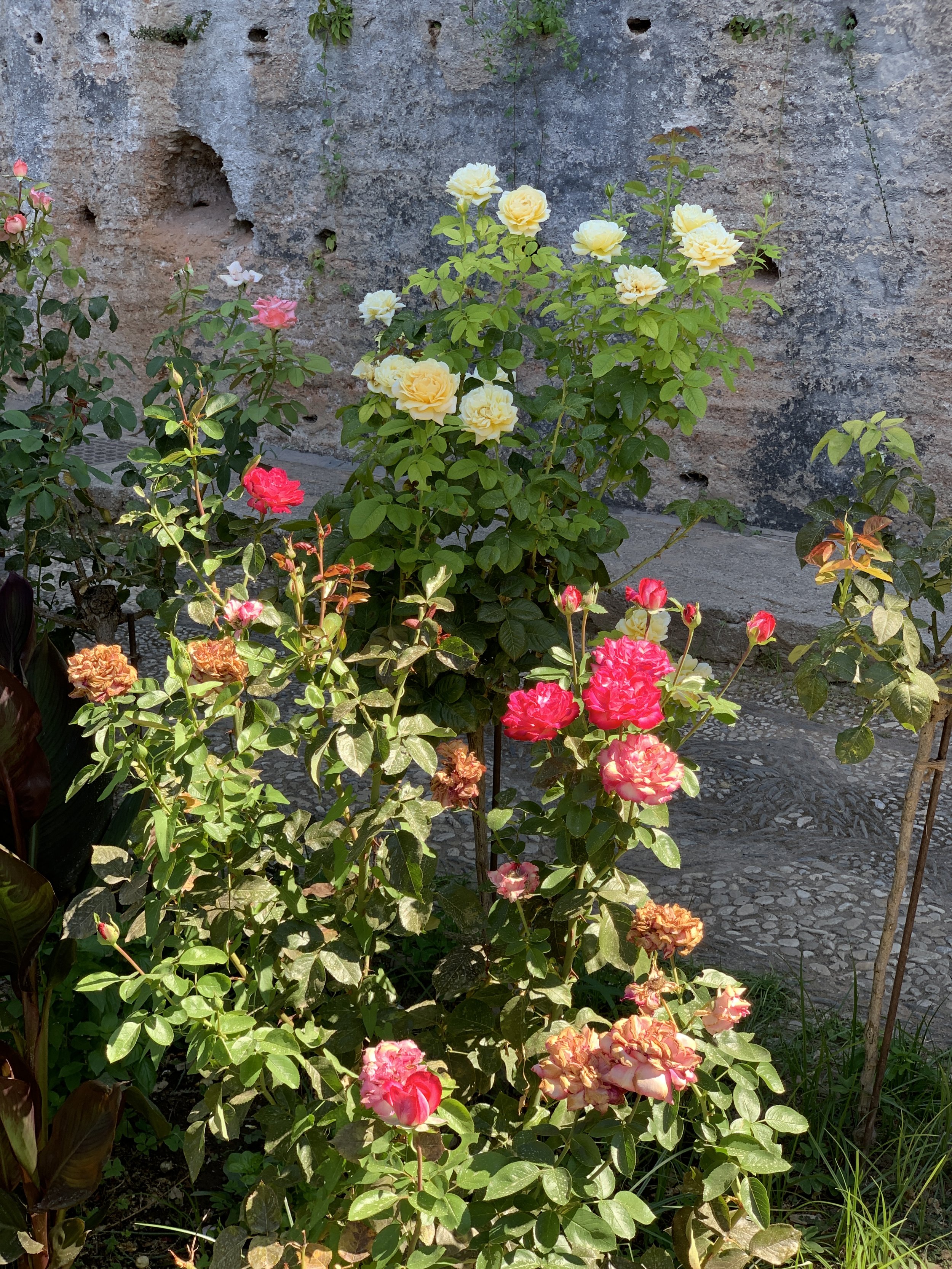
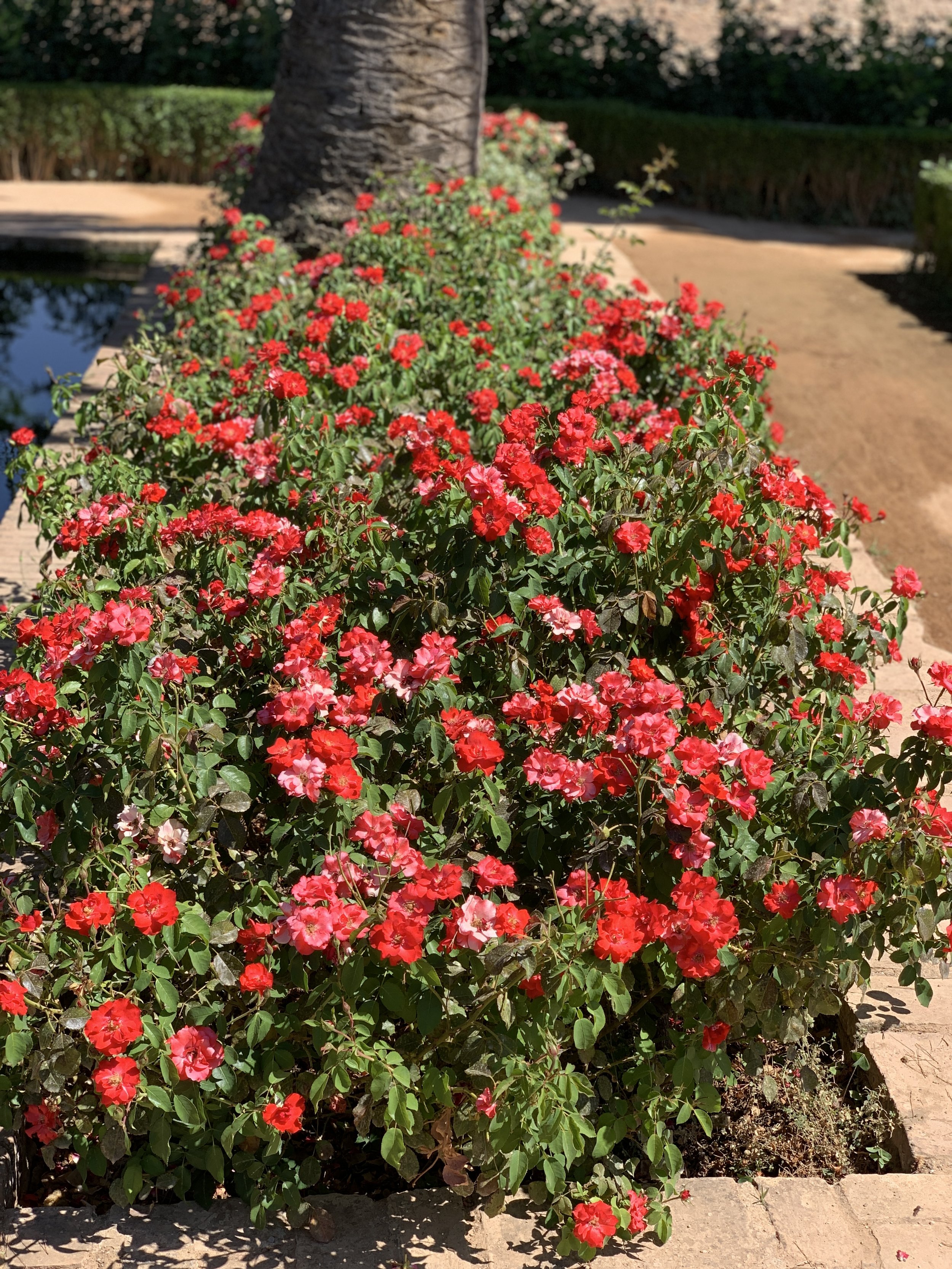
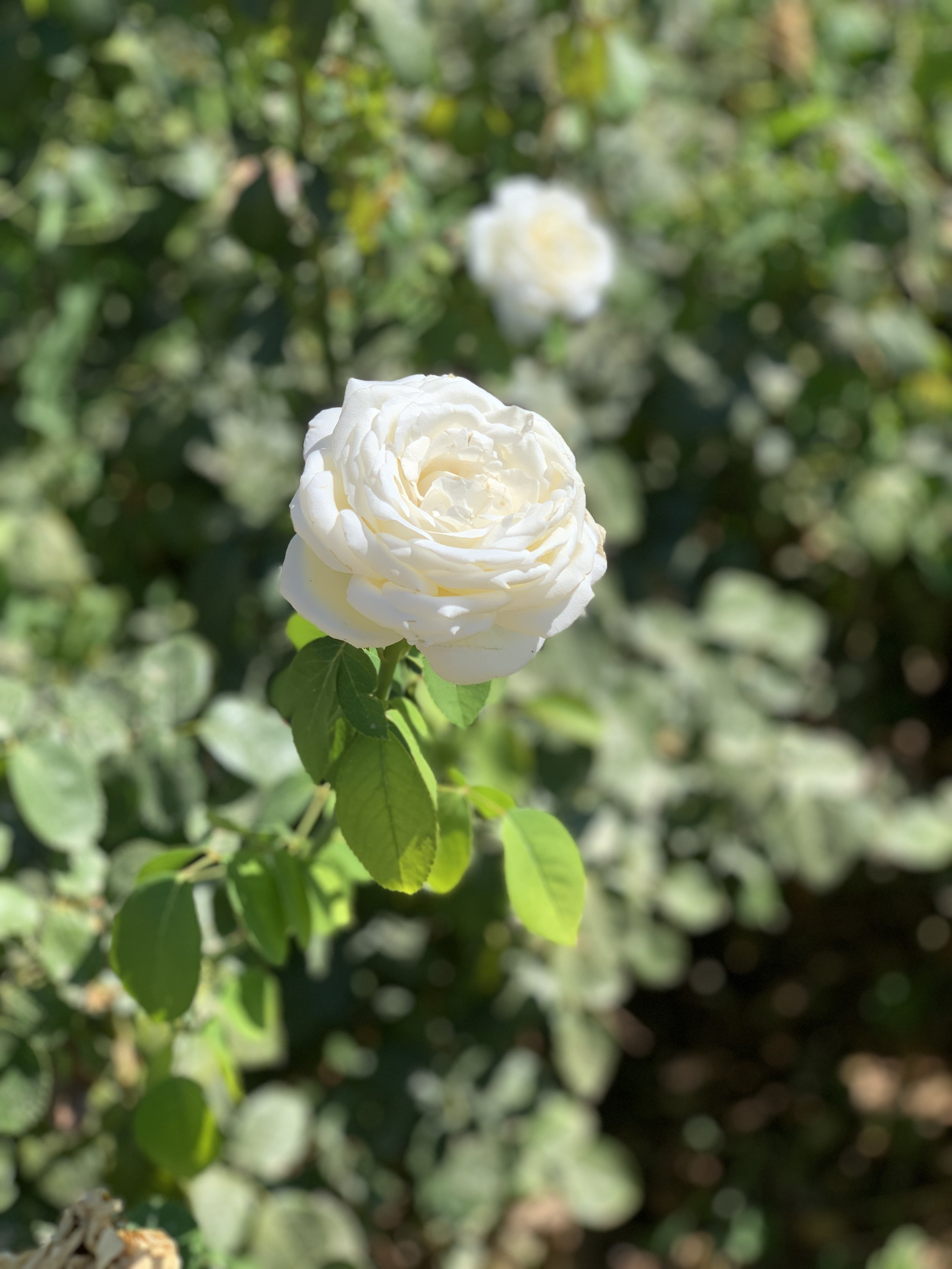

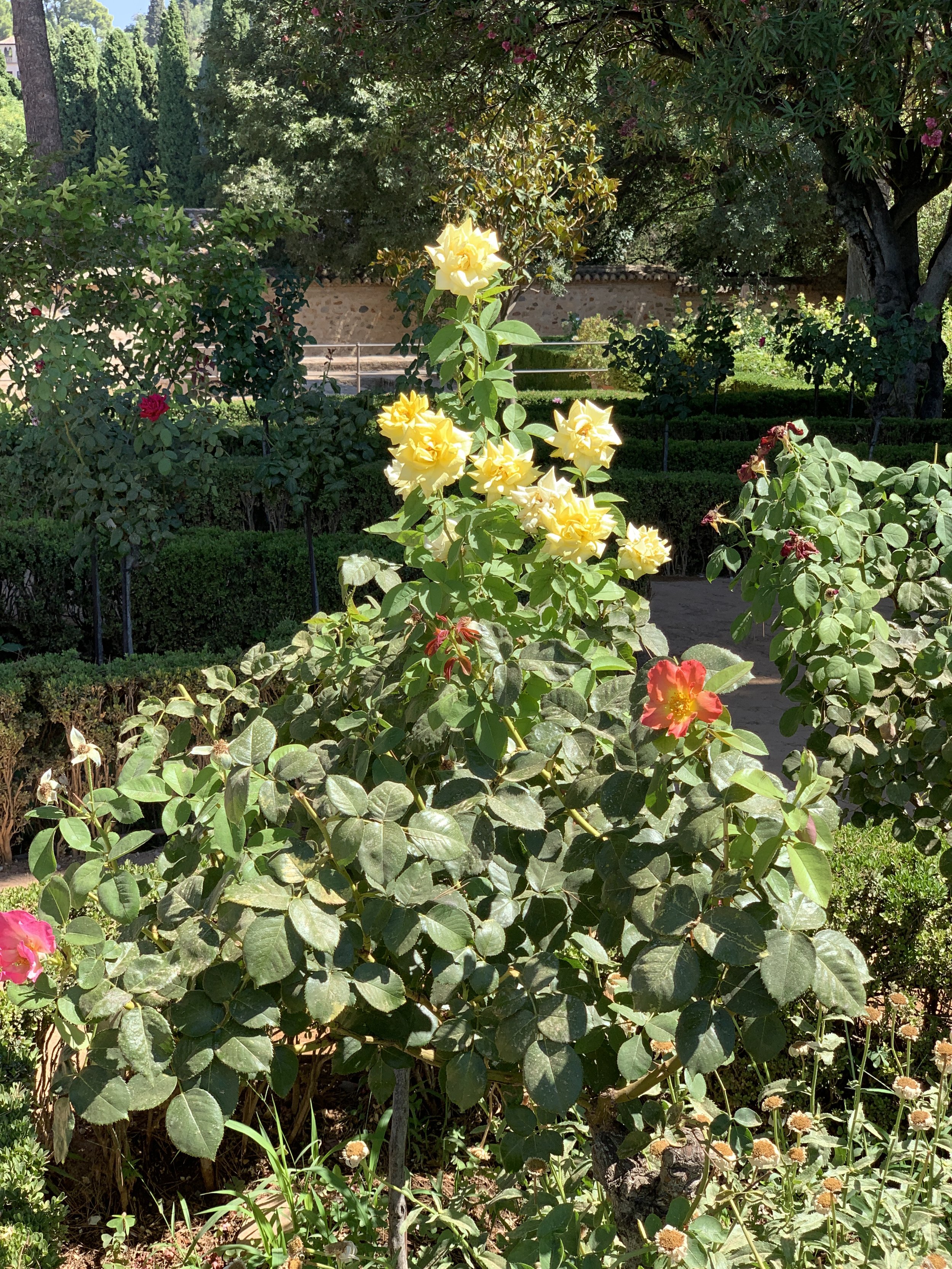
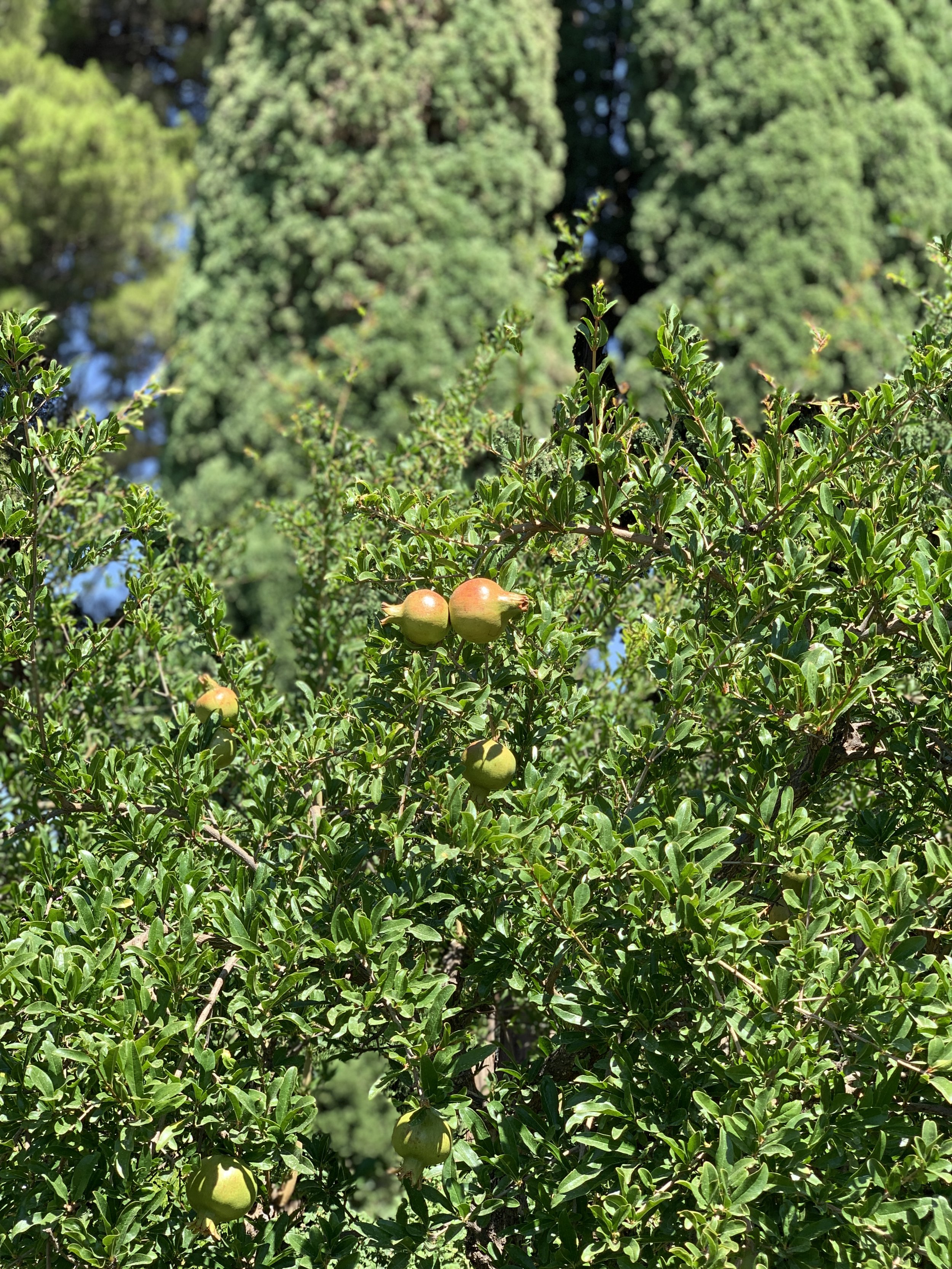
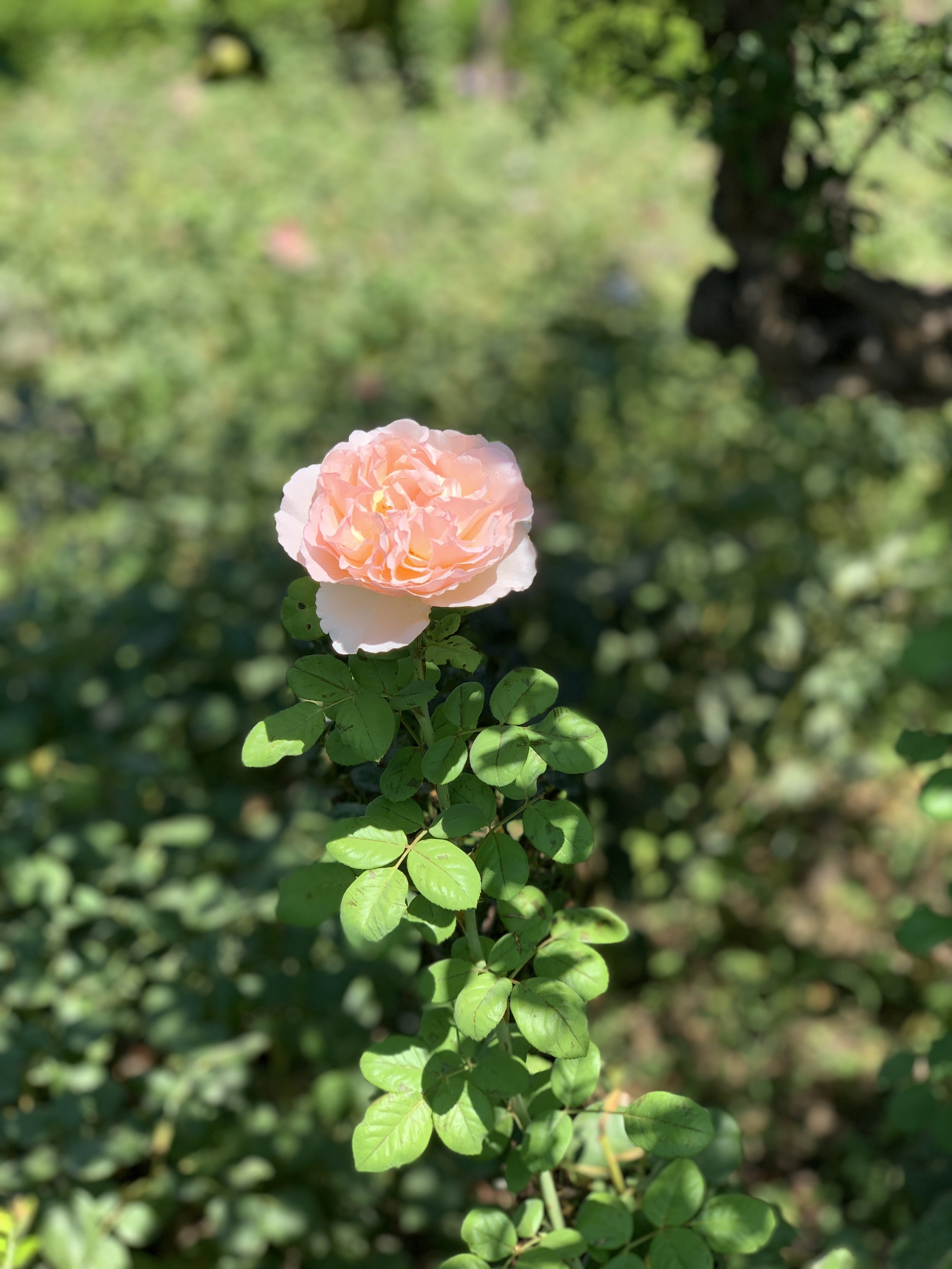
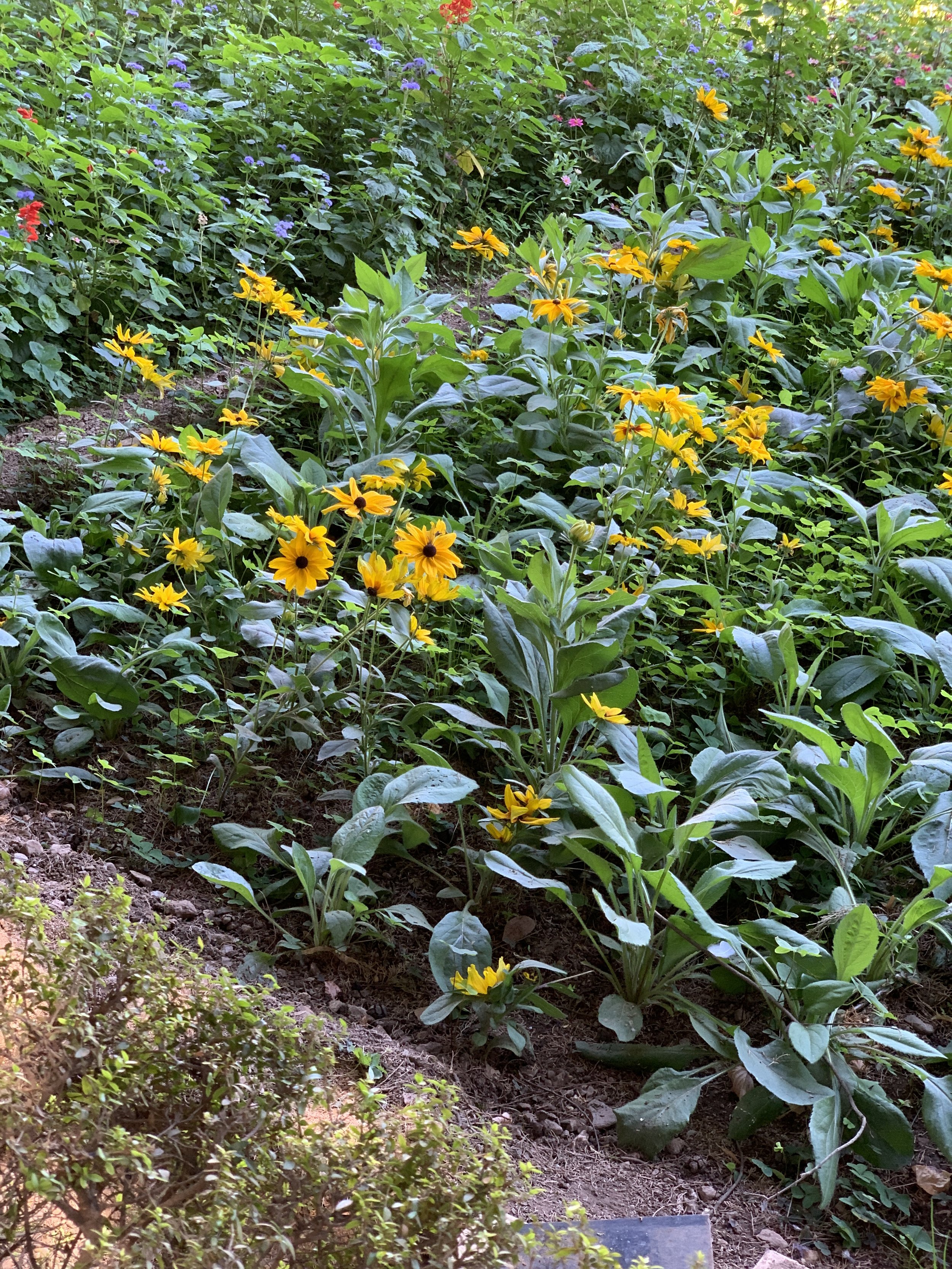

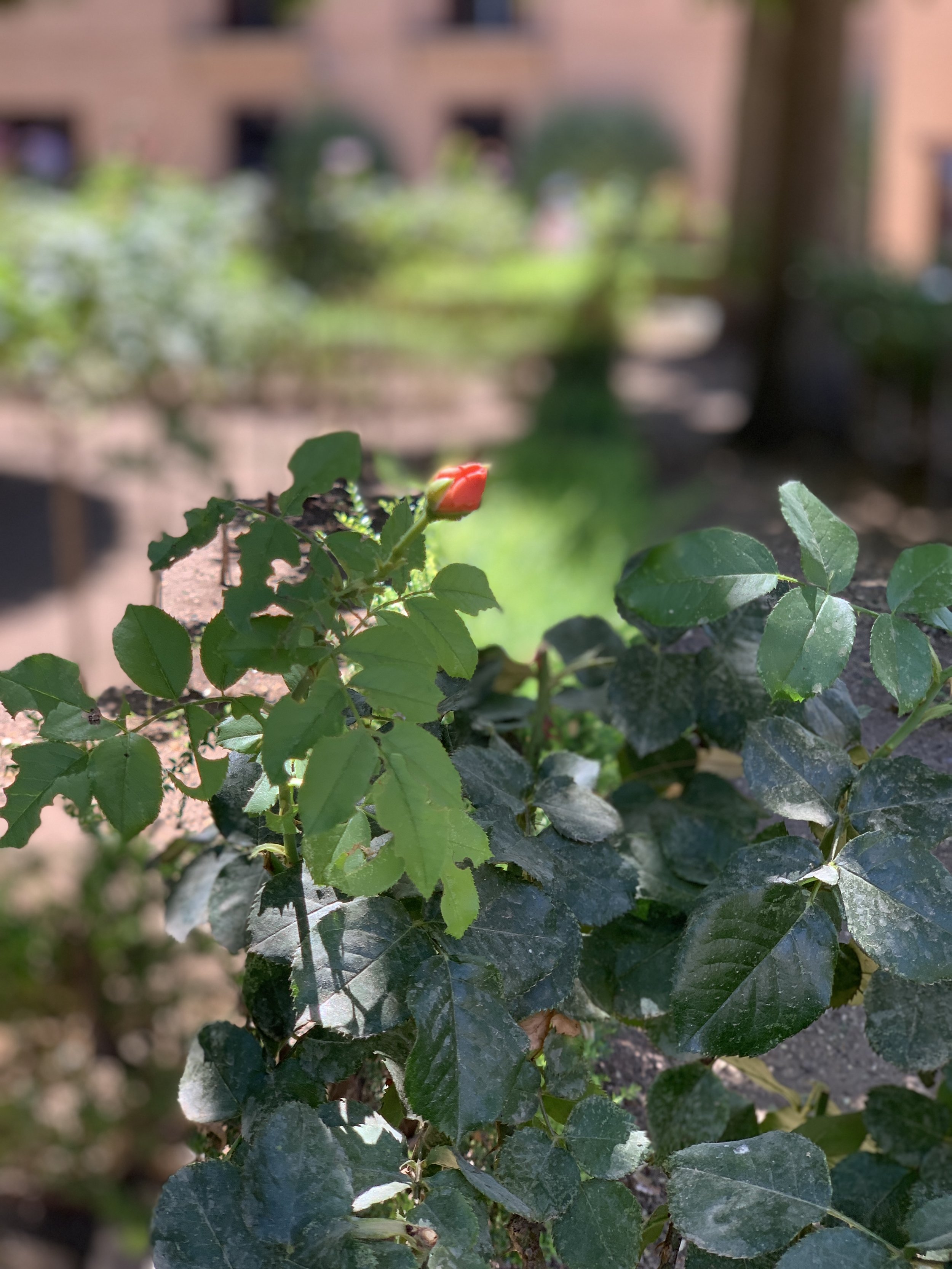


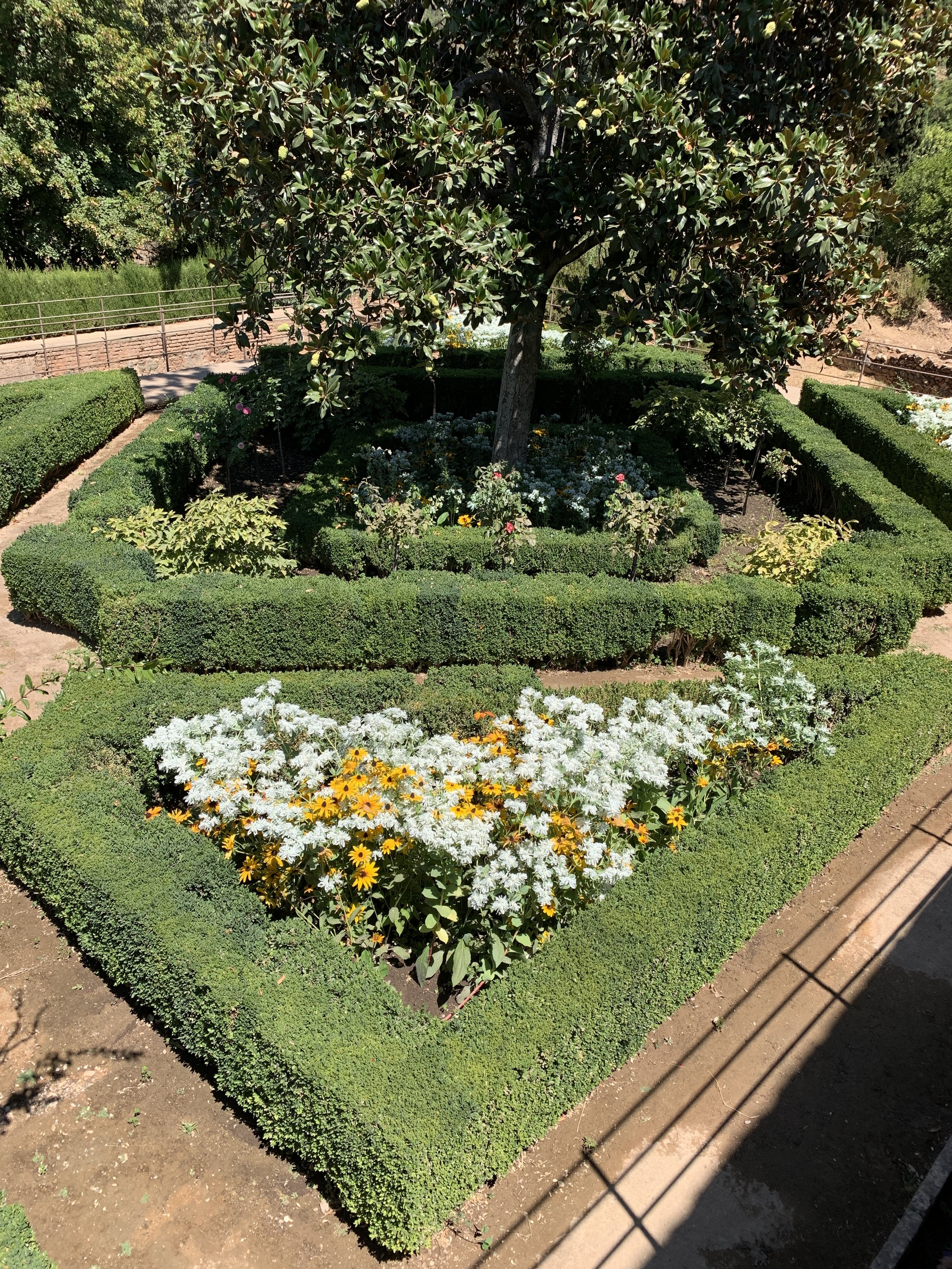
8a) This is also the neighborhood where the restrooms and vending machines are, and all I can say about that is that the facilities offered have exceedingly low ceilings for the number of people inside.

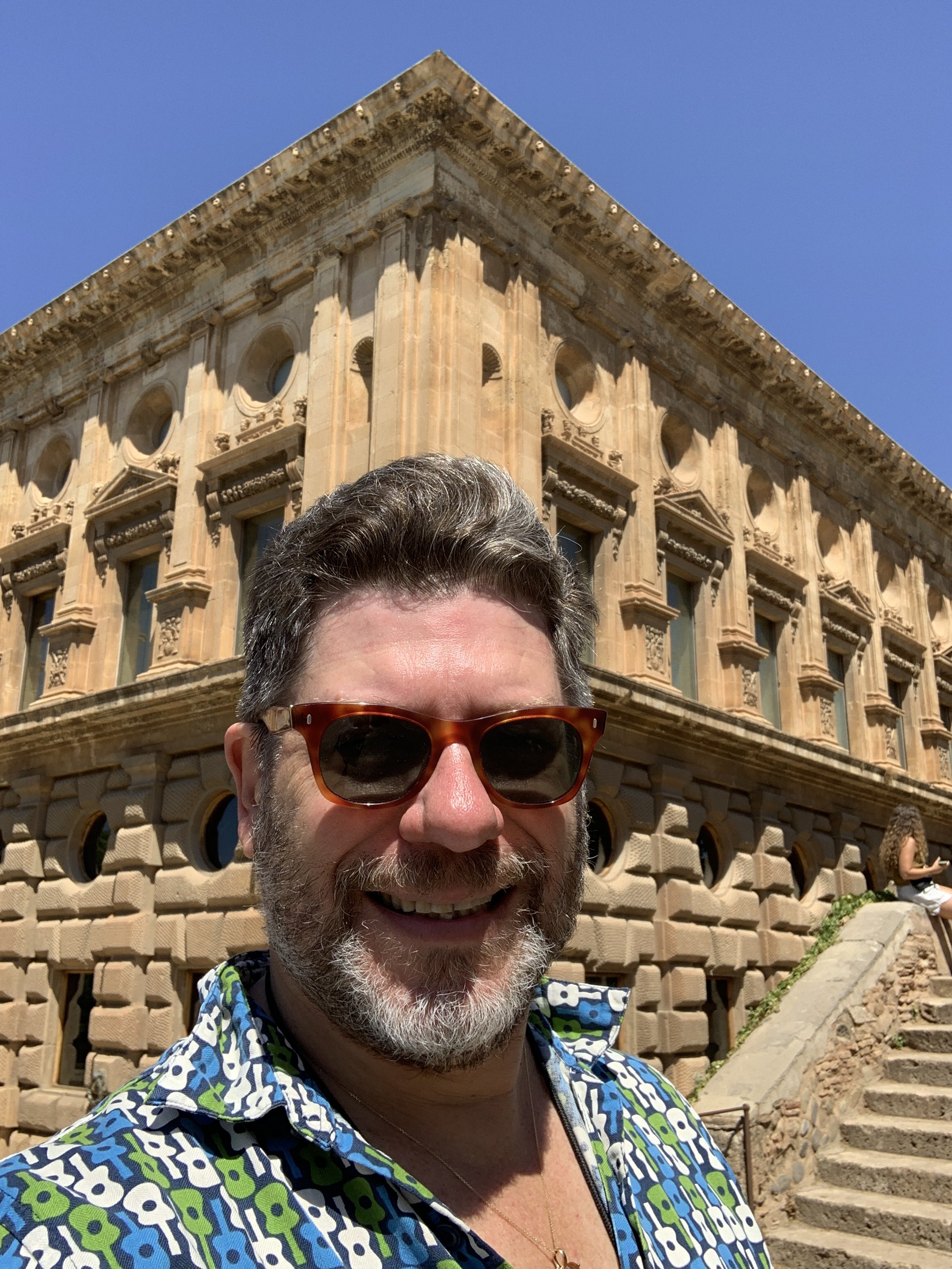
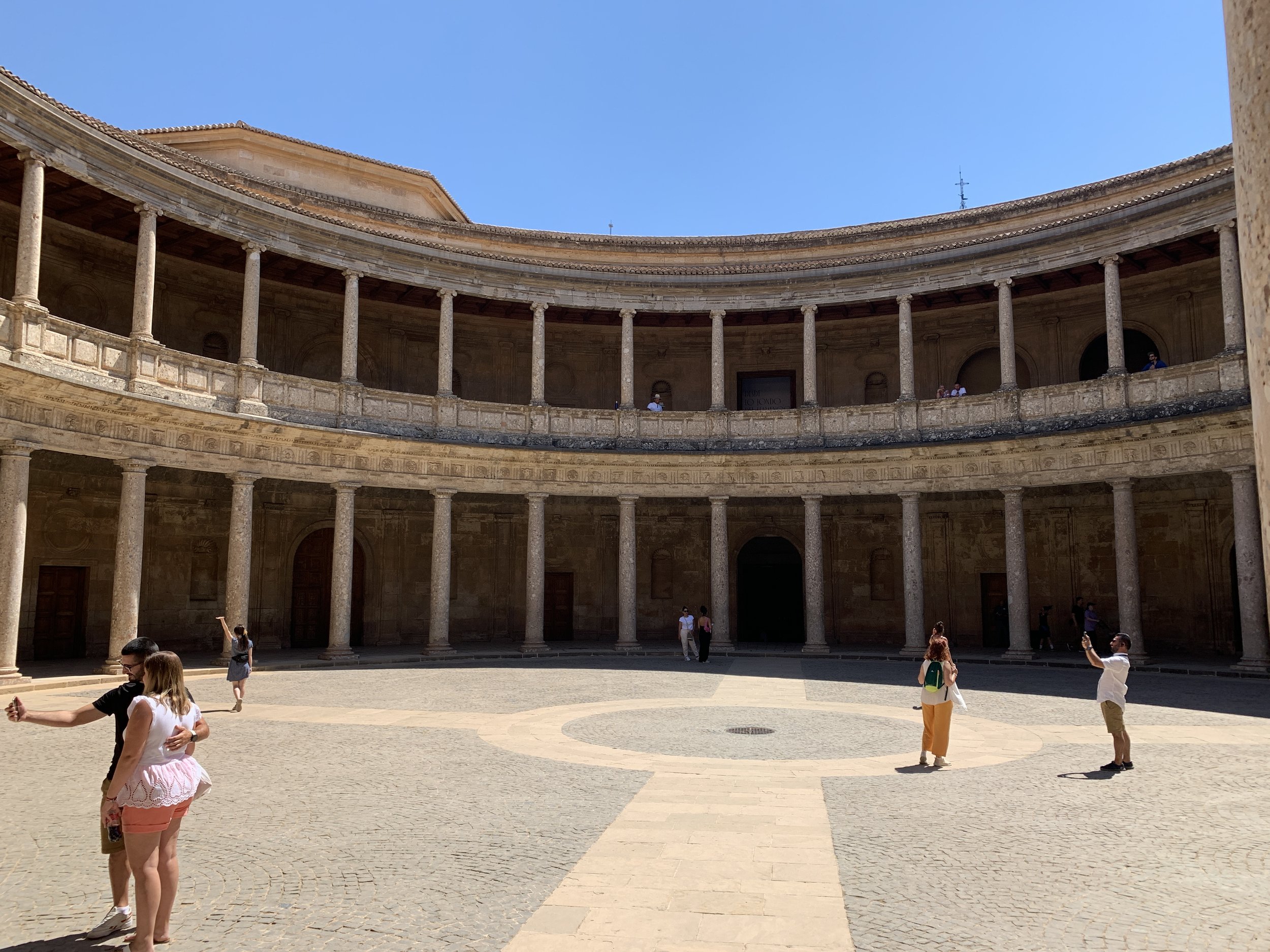
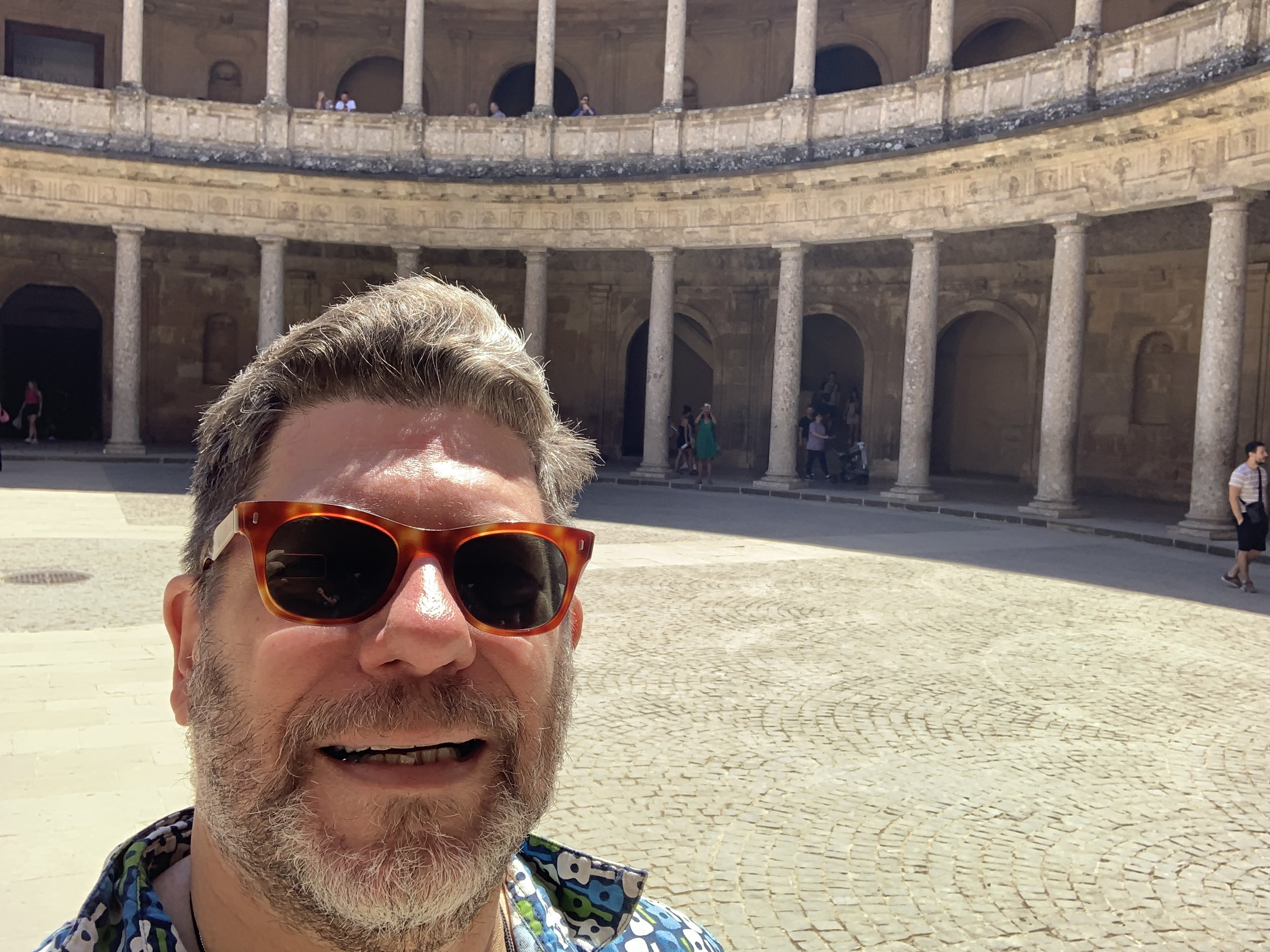
9) From there I went into a building that I later learned (later = today, October 9) was the Palacio Carlos V. Well, that’s nice. Big and square on the outside, Roman amphitheatre (without the theatre) round on the inside, it seemed to house offices and a museum that required another ticket. My feet weren’t going to allow me to do that, but of course, the round courtyard was entirely appropriate for selfies.
That line of umbrellas to the left marks the line to get into the Nasrid Palace. Thoughtful of them to provide shade!
10) All tickets for the Nasrid Palace include entry times and, as I often have, I took a chance and got in line about 15 minutes earlier than I might have. And when I got to the front of the line, they sent me back! Well! At the Alhambra, anyway, they don’t mess around.
10a) During both my waits in line, it was most interesting to see all the other tourists from quite literally everywhere, all doing the things tourists from quite literally everywhere do: look for places to sit down, debate with each other about what to do next, and (like me) ignore printed materials right in front of them. One family with a child in a stroller was turned away because the Nasrid Palace cannot accommodate anything with wheels — and they say so at every opportunity.
11) When I finally entered the Nasrid Palace, it was heaven. It could be said that the Alhambra is the original source of things that have inspired me since infancy, specifically Rimsky-Korsakov’s Sheherezade and all the Orientalia my gramma assembled to make her home so wonderful. The arches! The fretwork! The little niches overlooking Granada! The mosaic tiles! The courtyards and their marble fountains and meticulously clipped hedges!
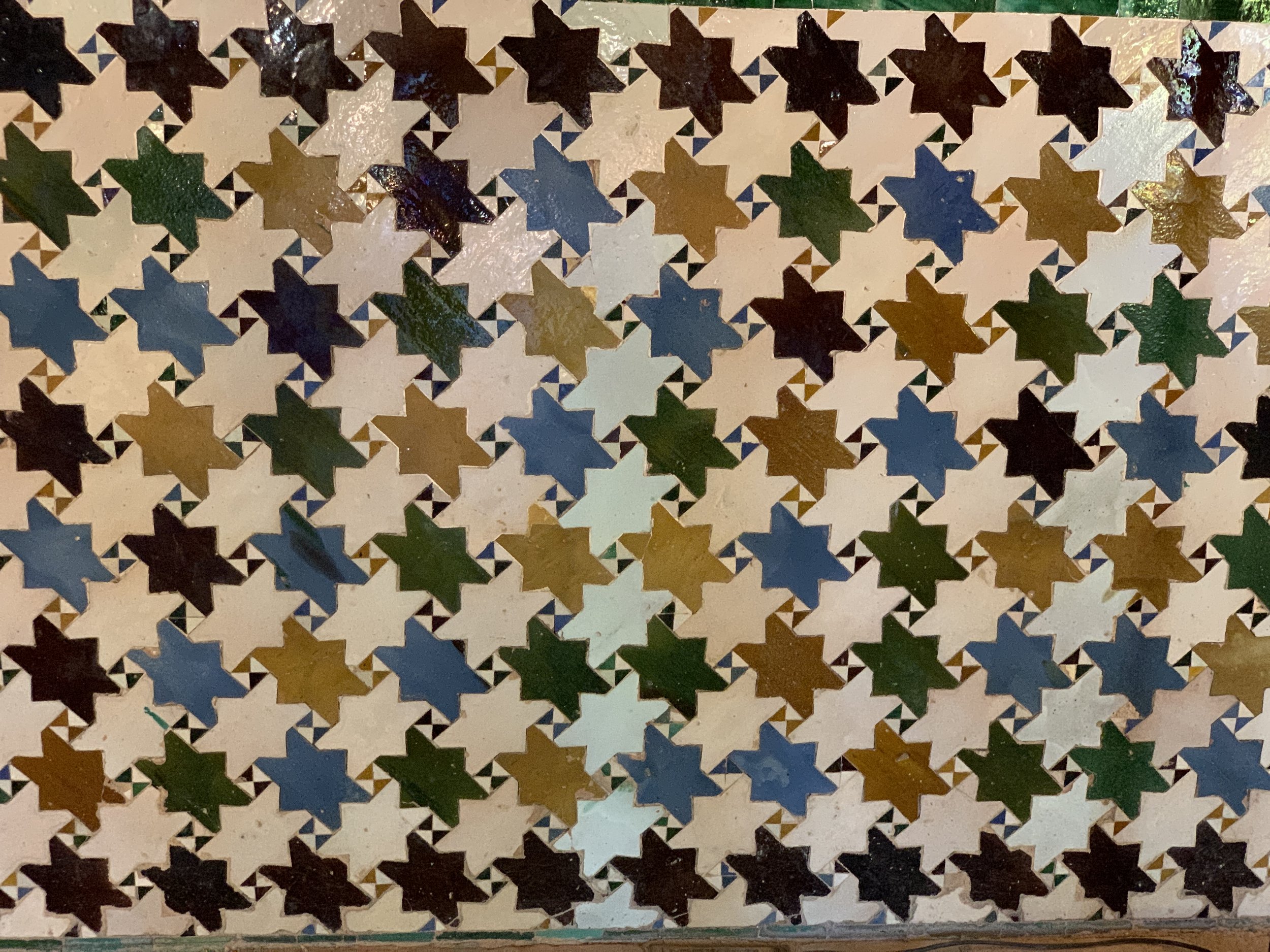

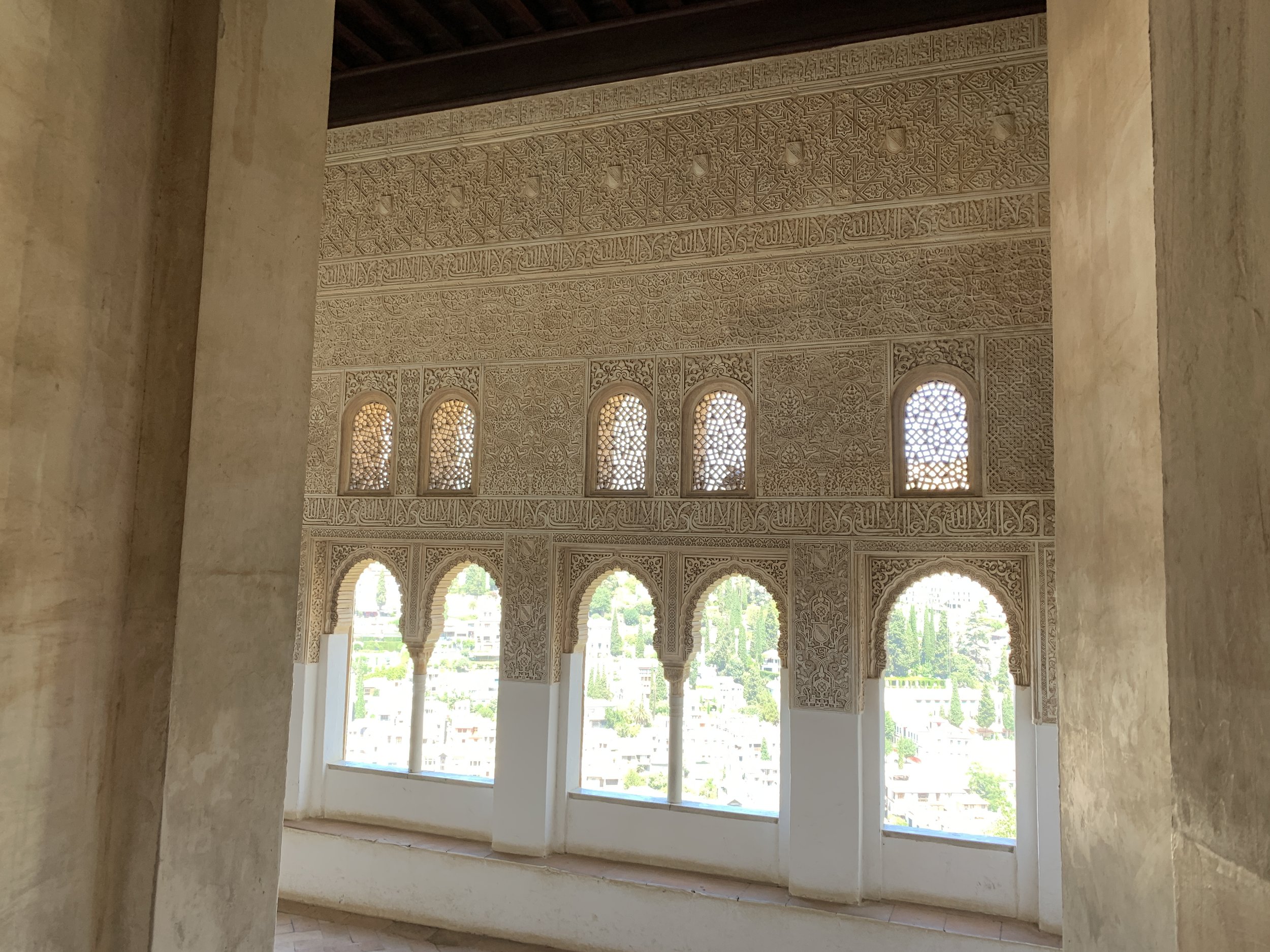
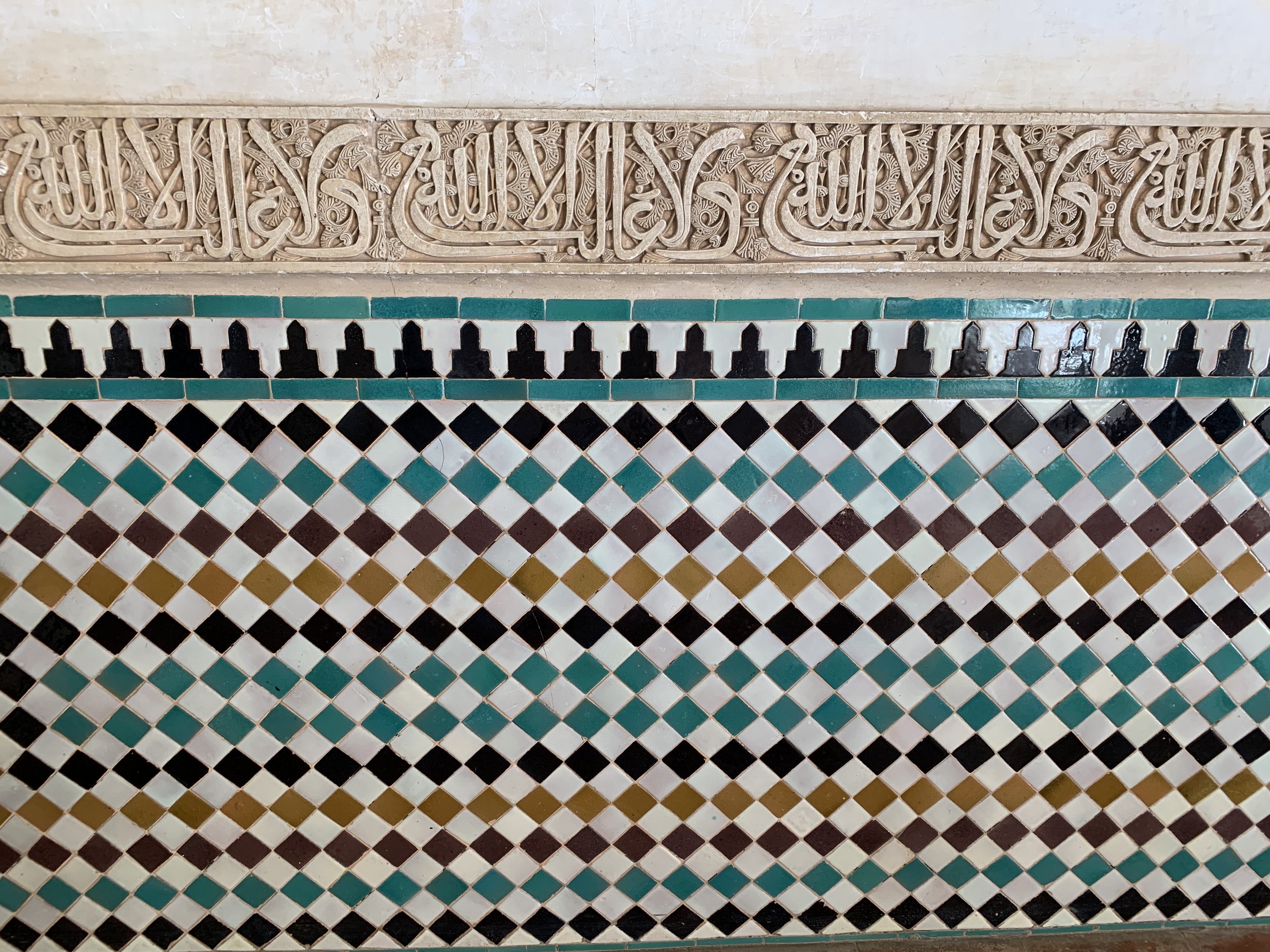
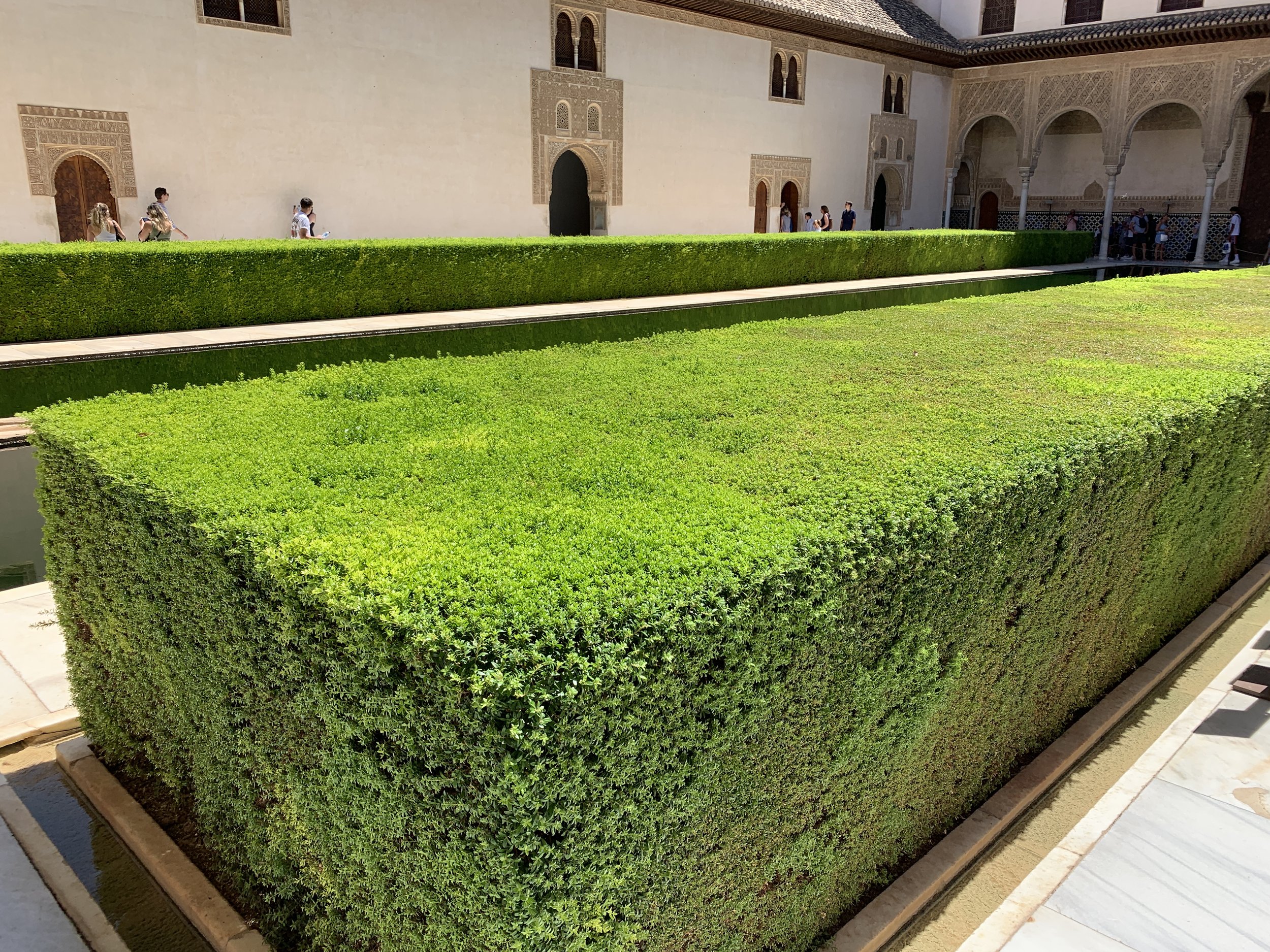
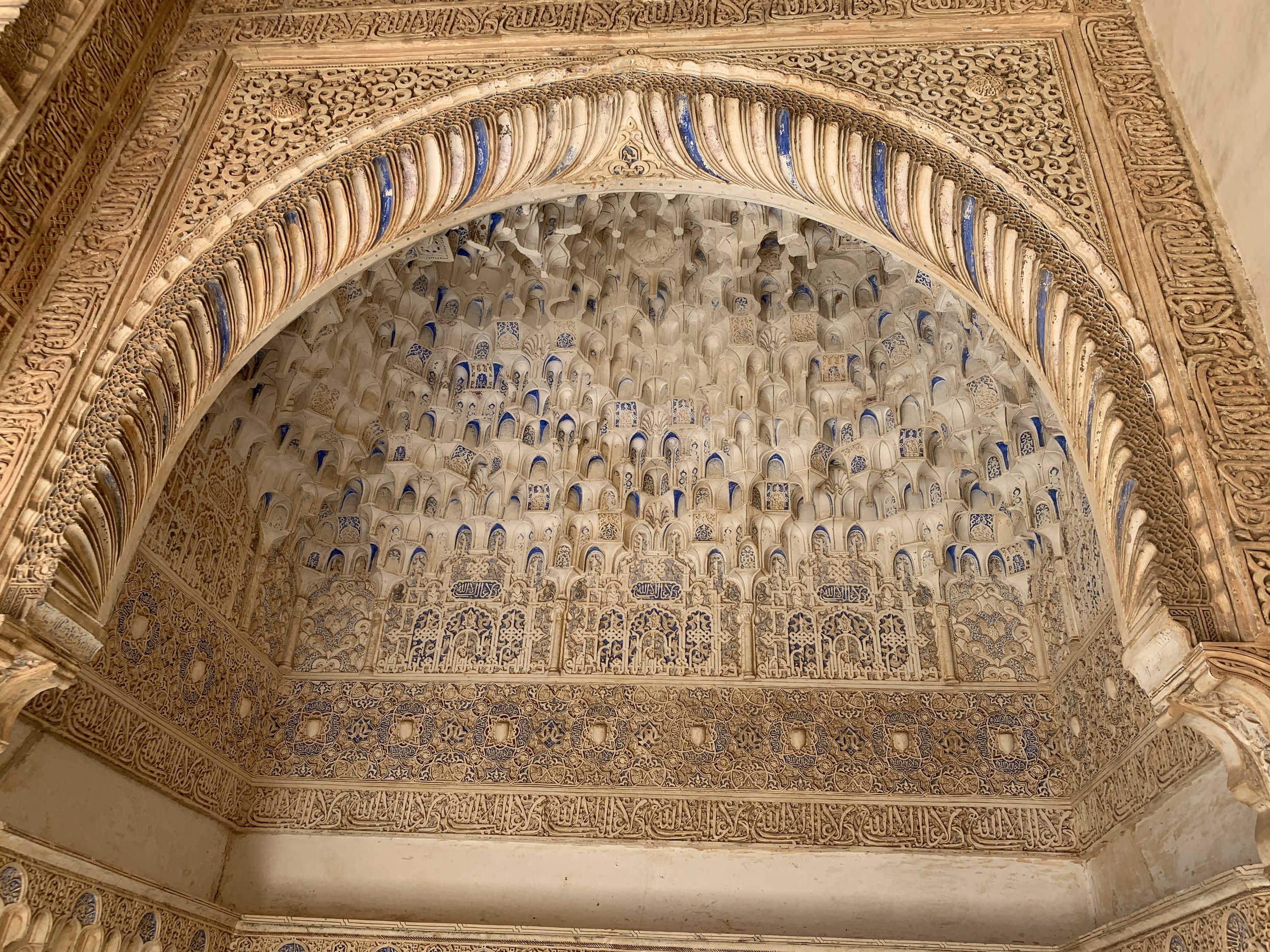
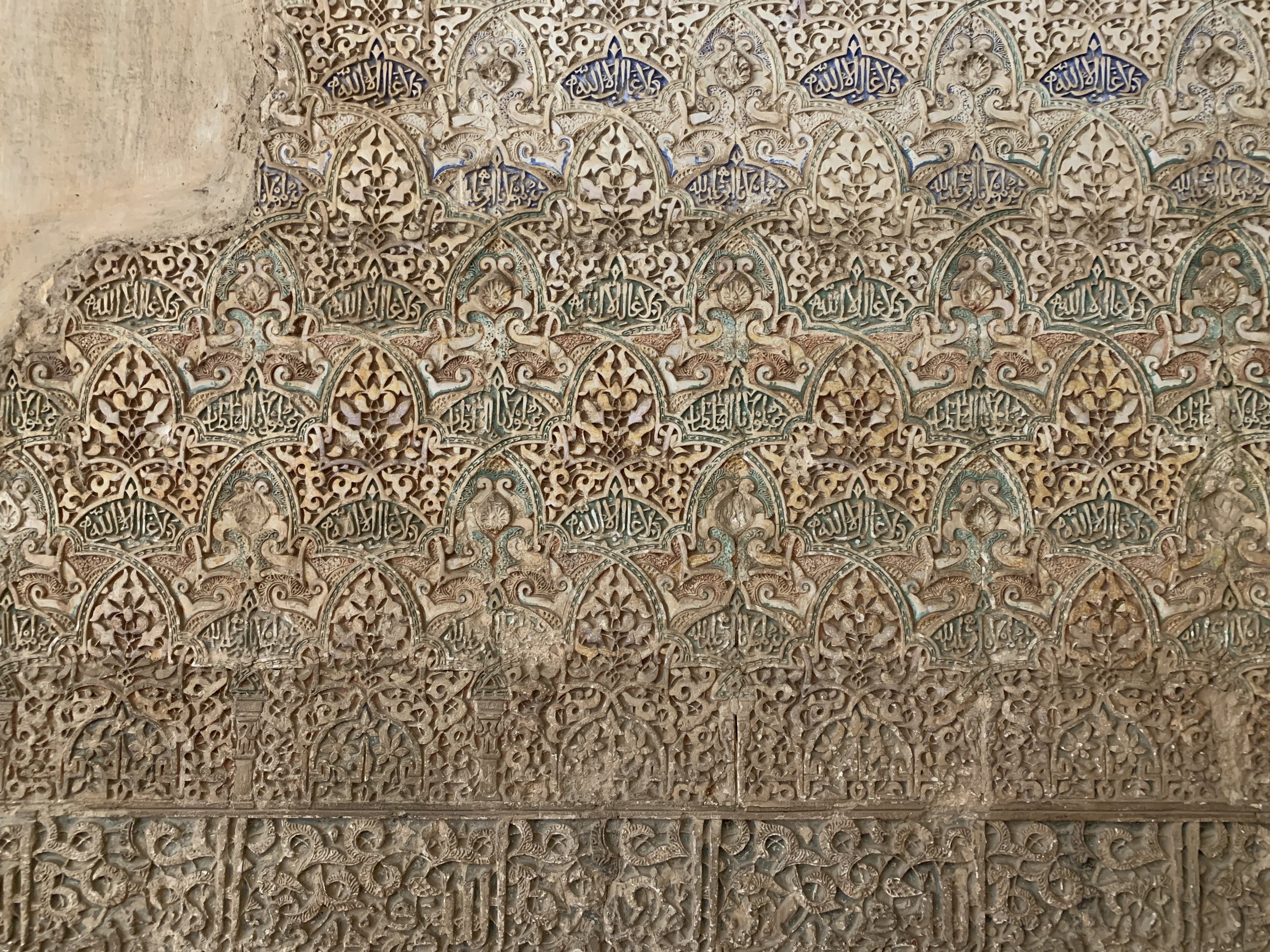

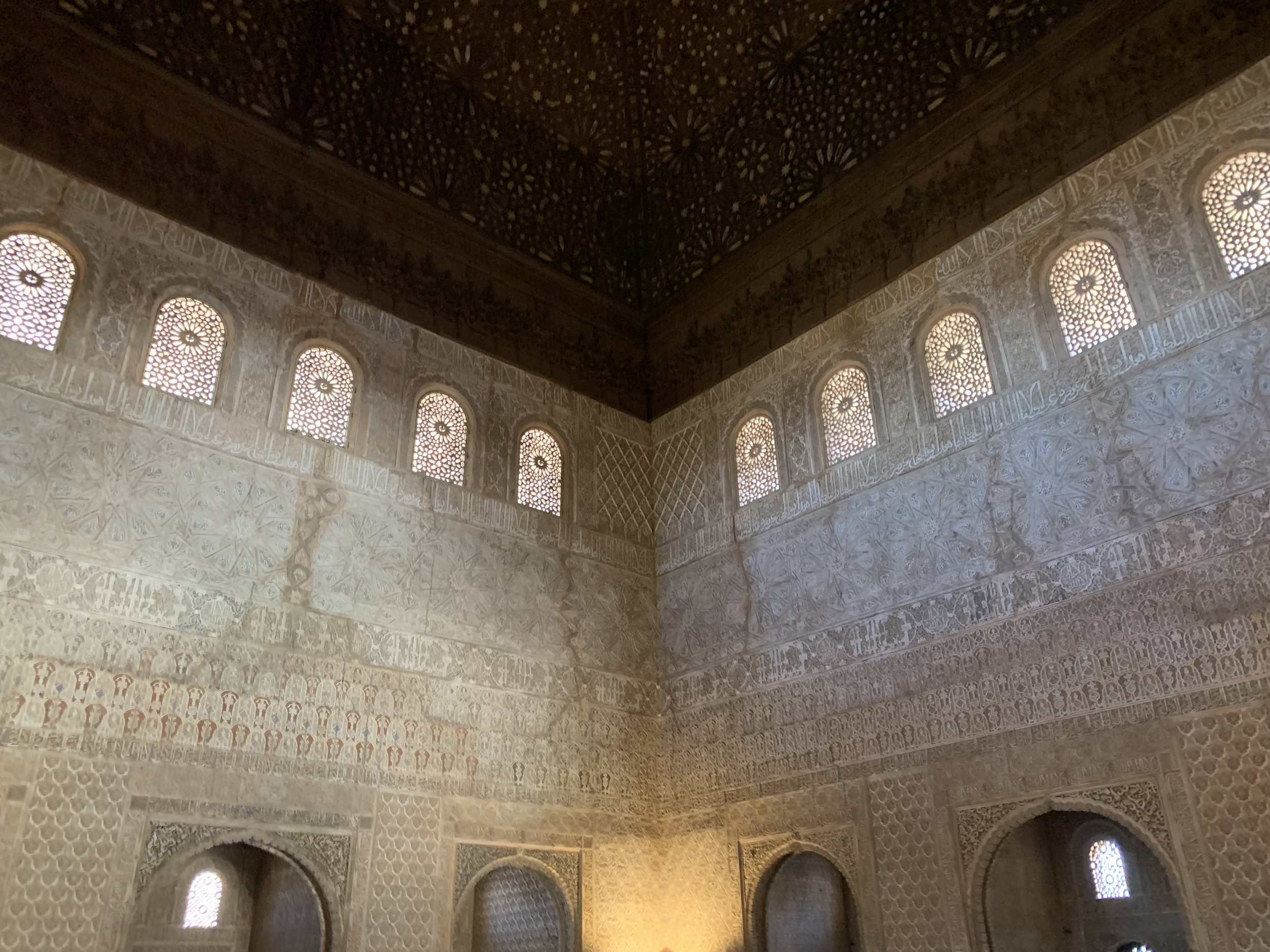
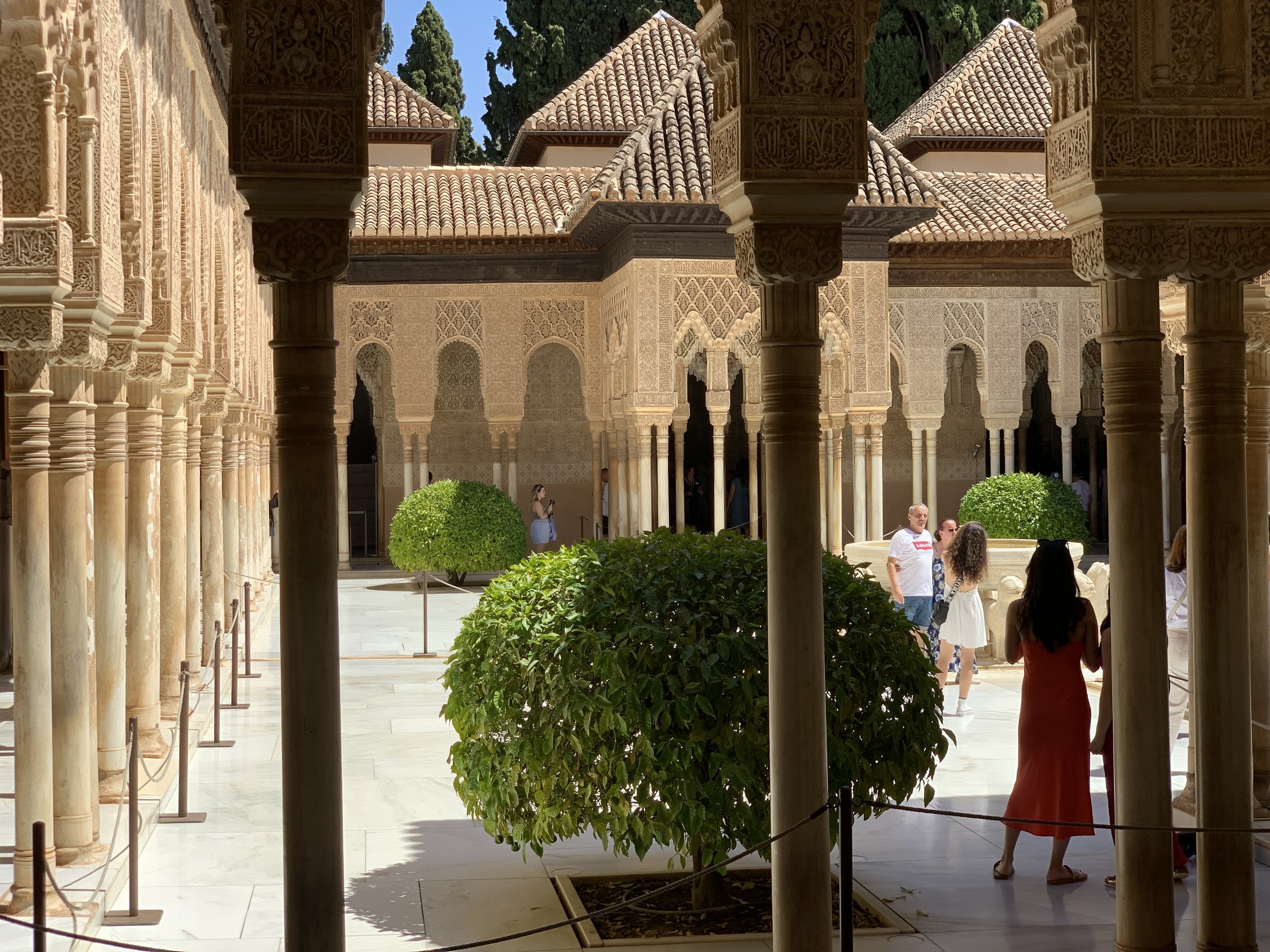

11a) Yes, it was hot, and yes, there were other people, including a few groups to navigate around, but my goodness — I was passing through a dream, and only wished I could have taken a plunge into one of those fountains.
12) I passed out of the Nasrid in a dream, except for my feet, which could only support my dreams so long. I continued through the remaining, glorious gardens, retracing only a few steps back to the exit — and of course the shop! They were awfully accommodating and very nice.
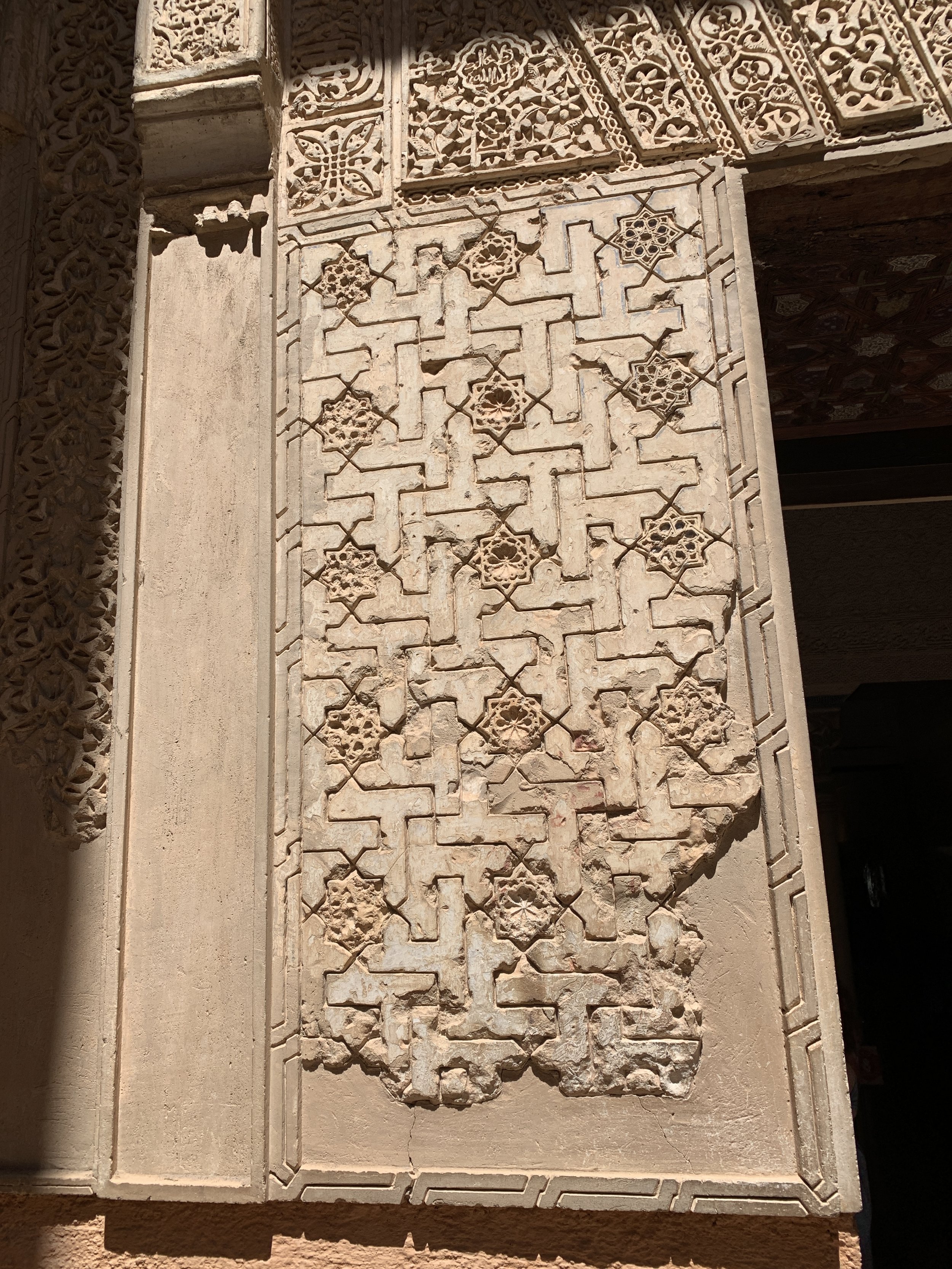
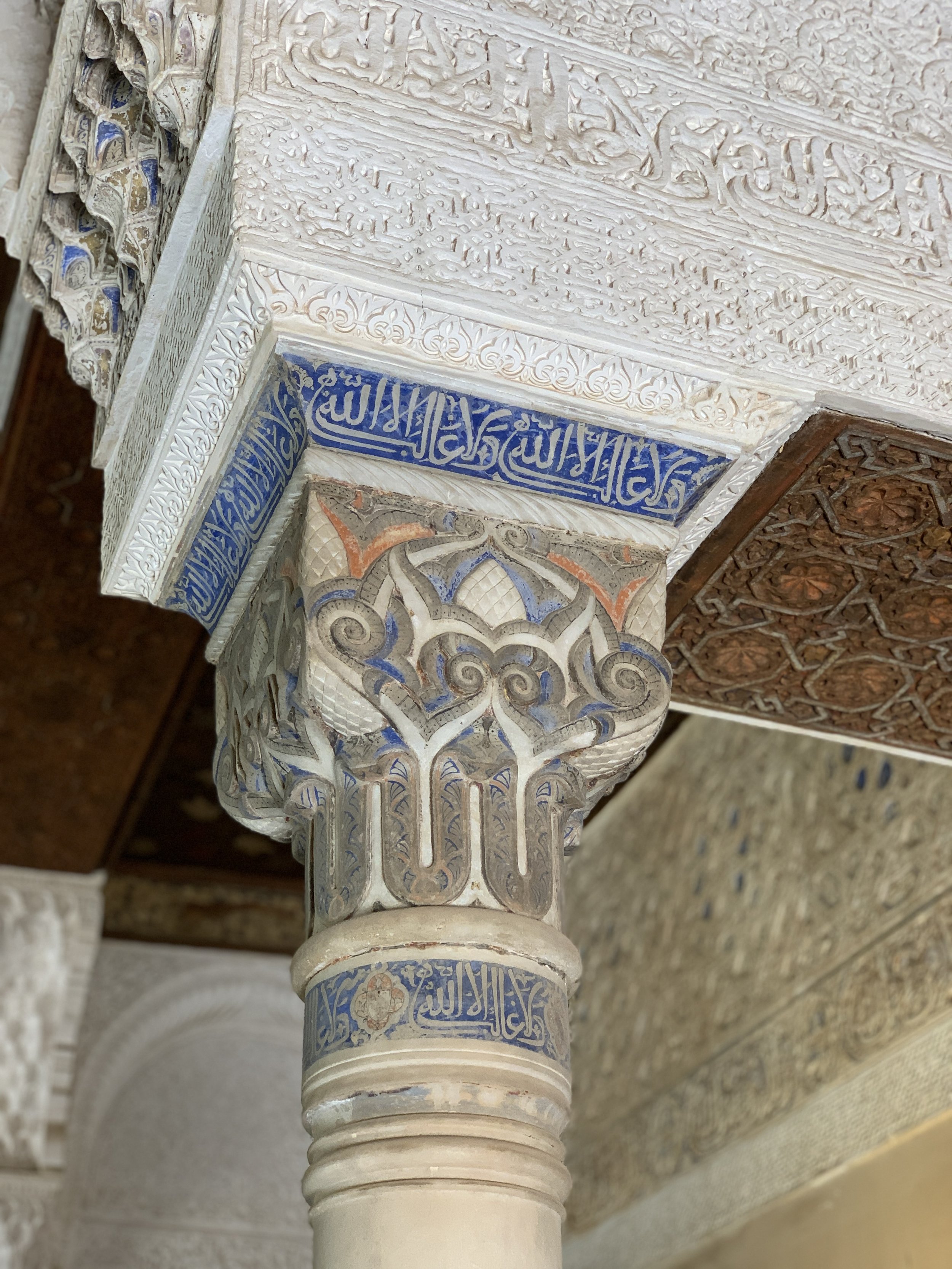

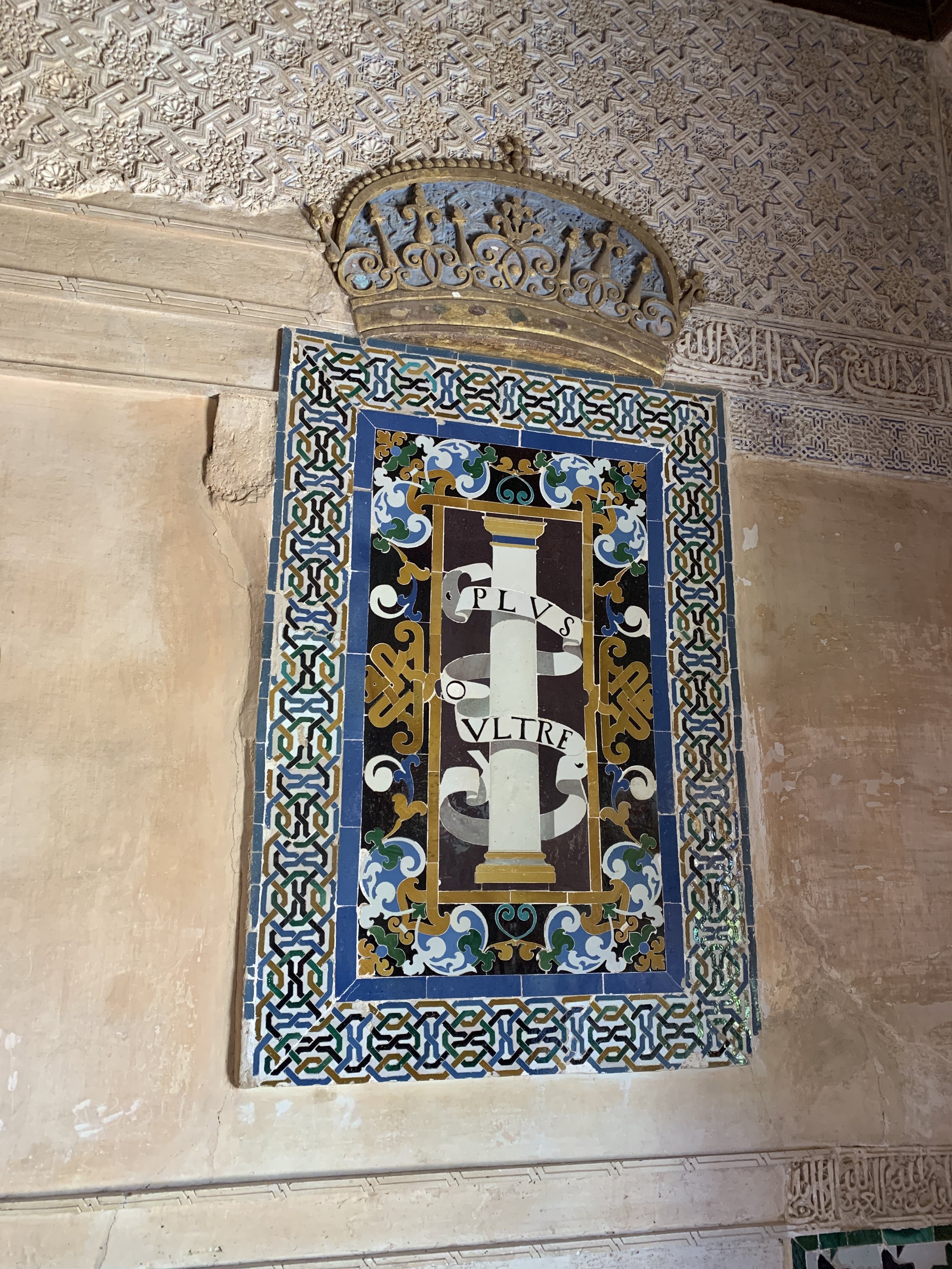
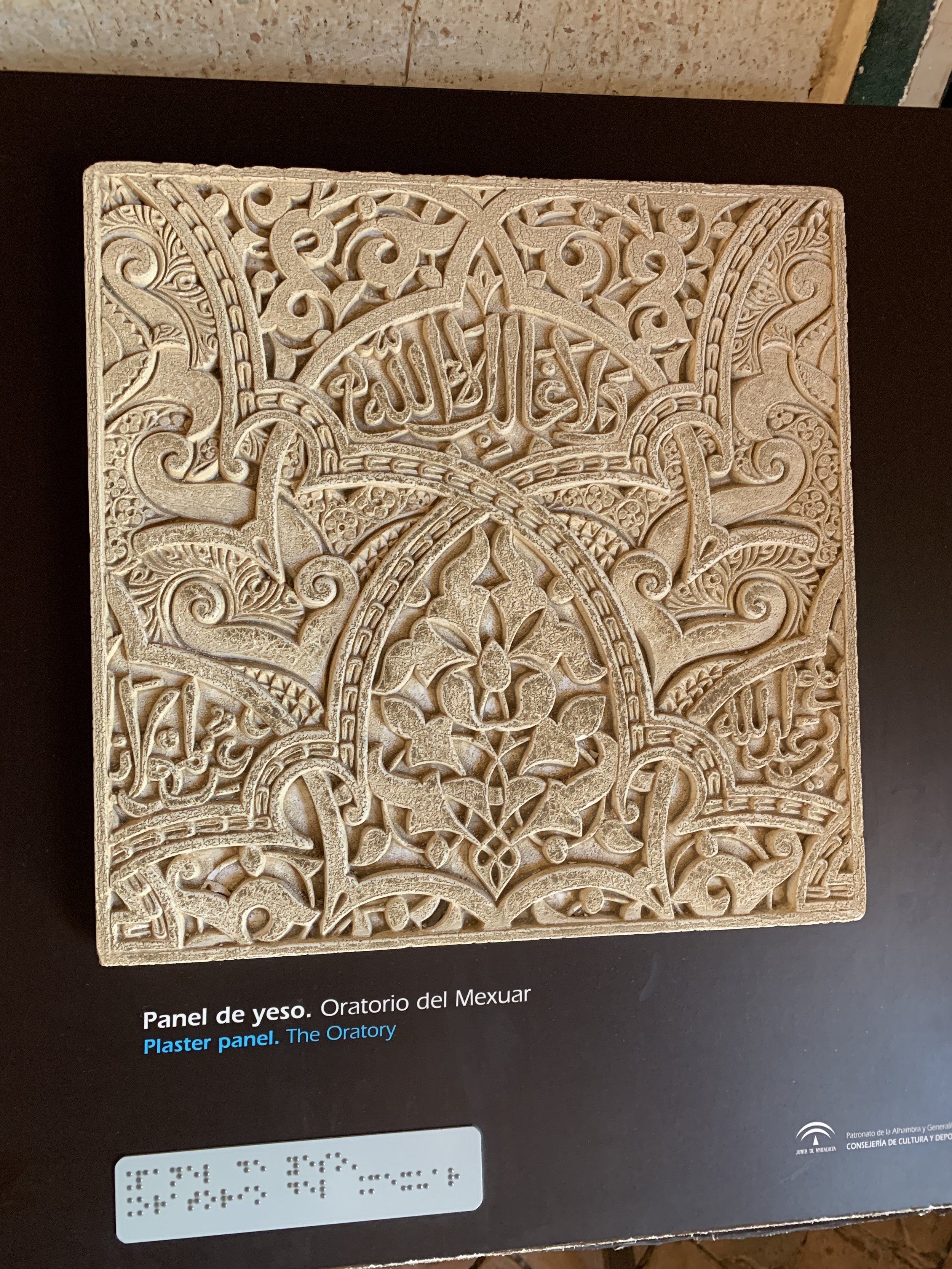

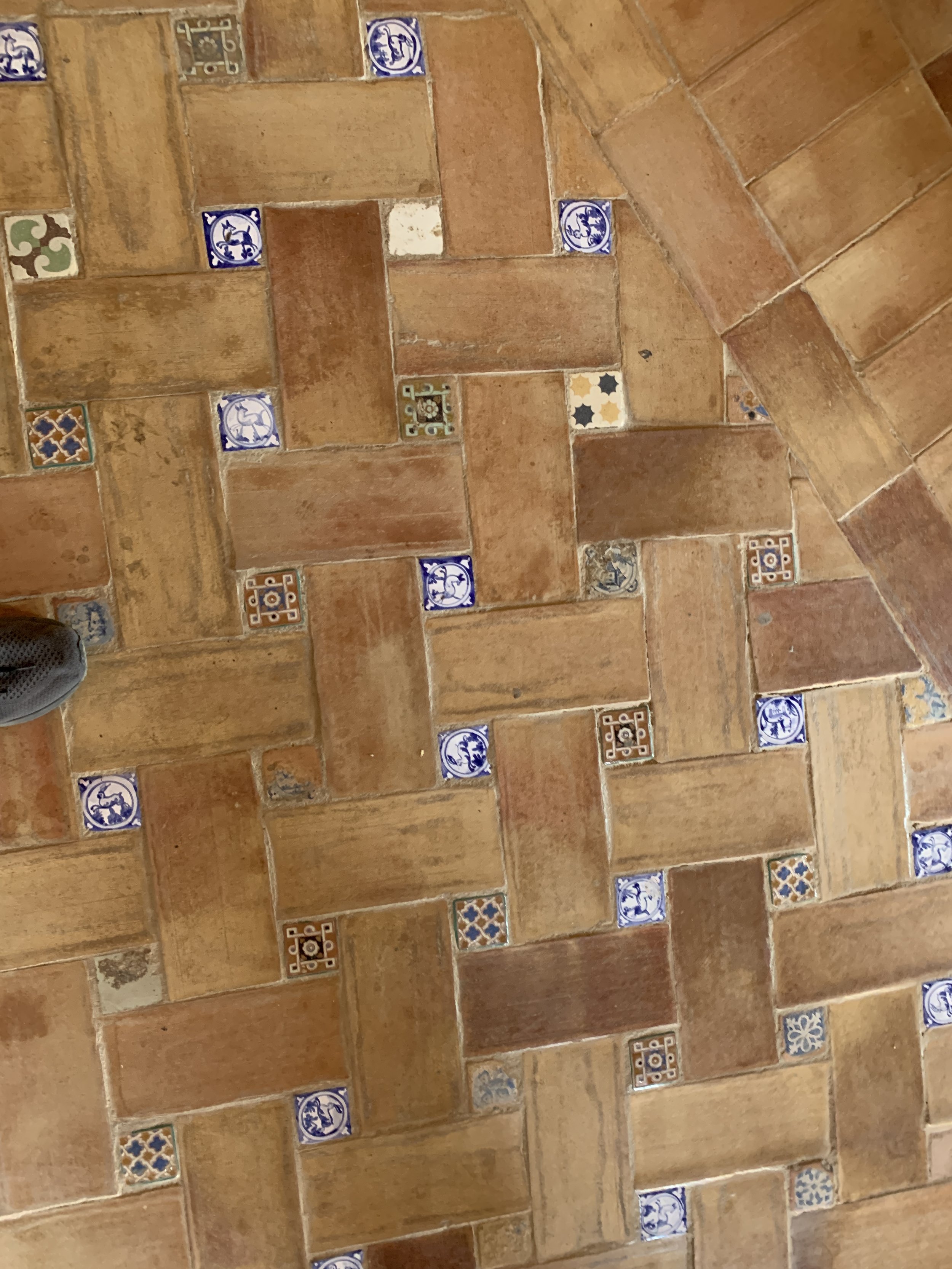
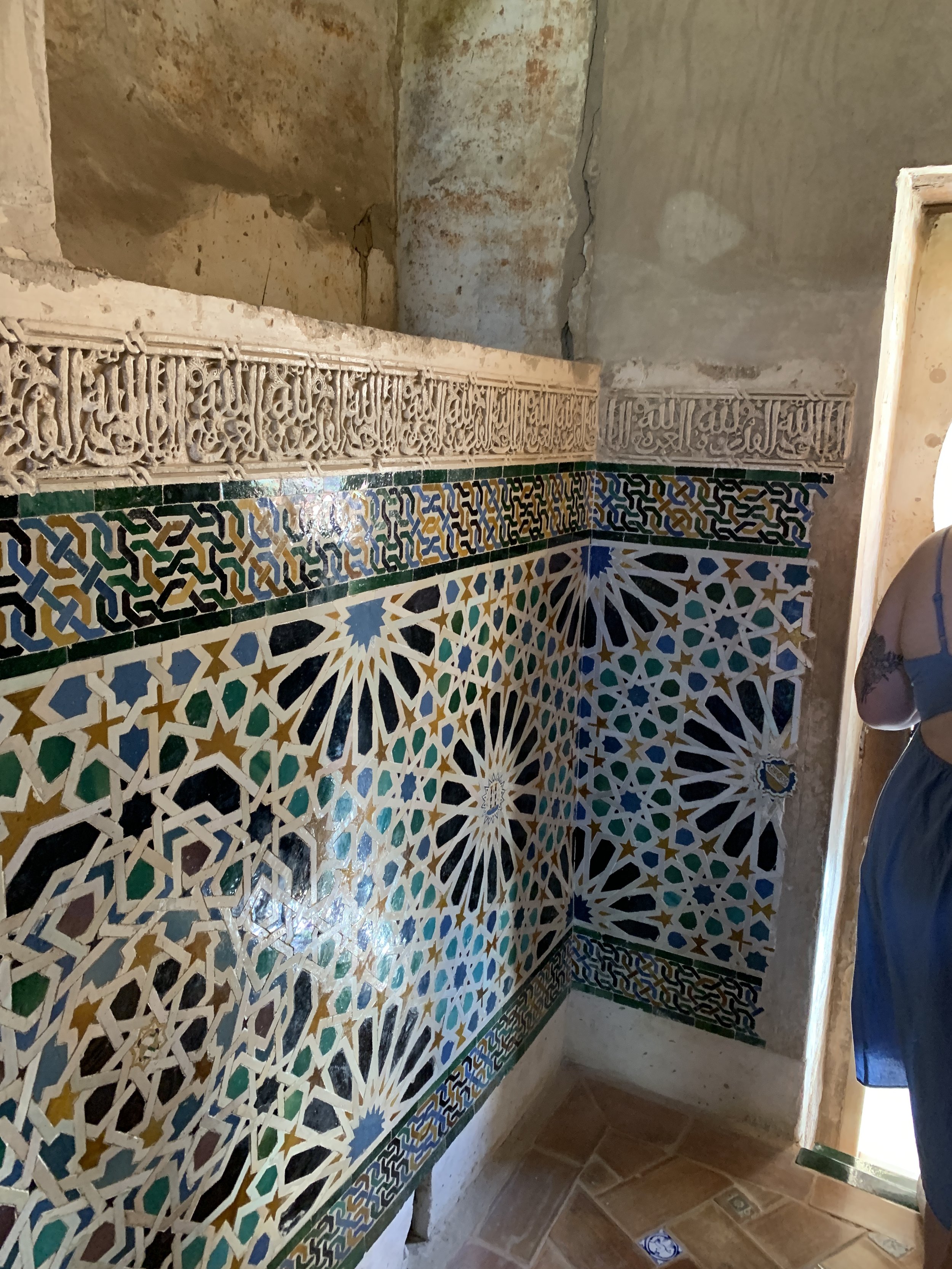
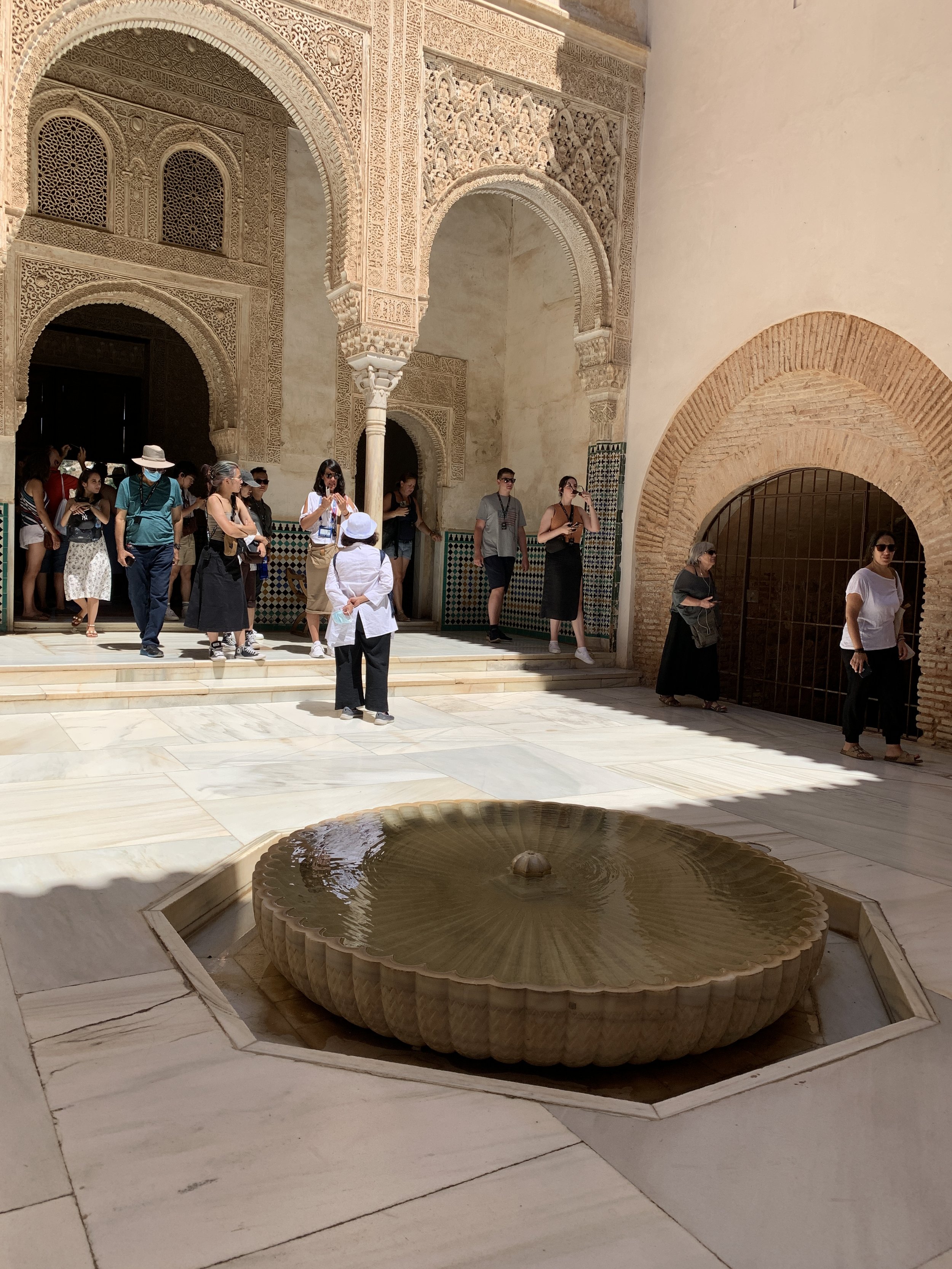
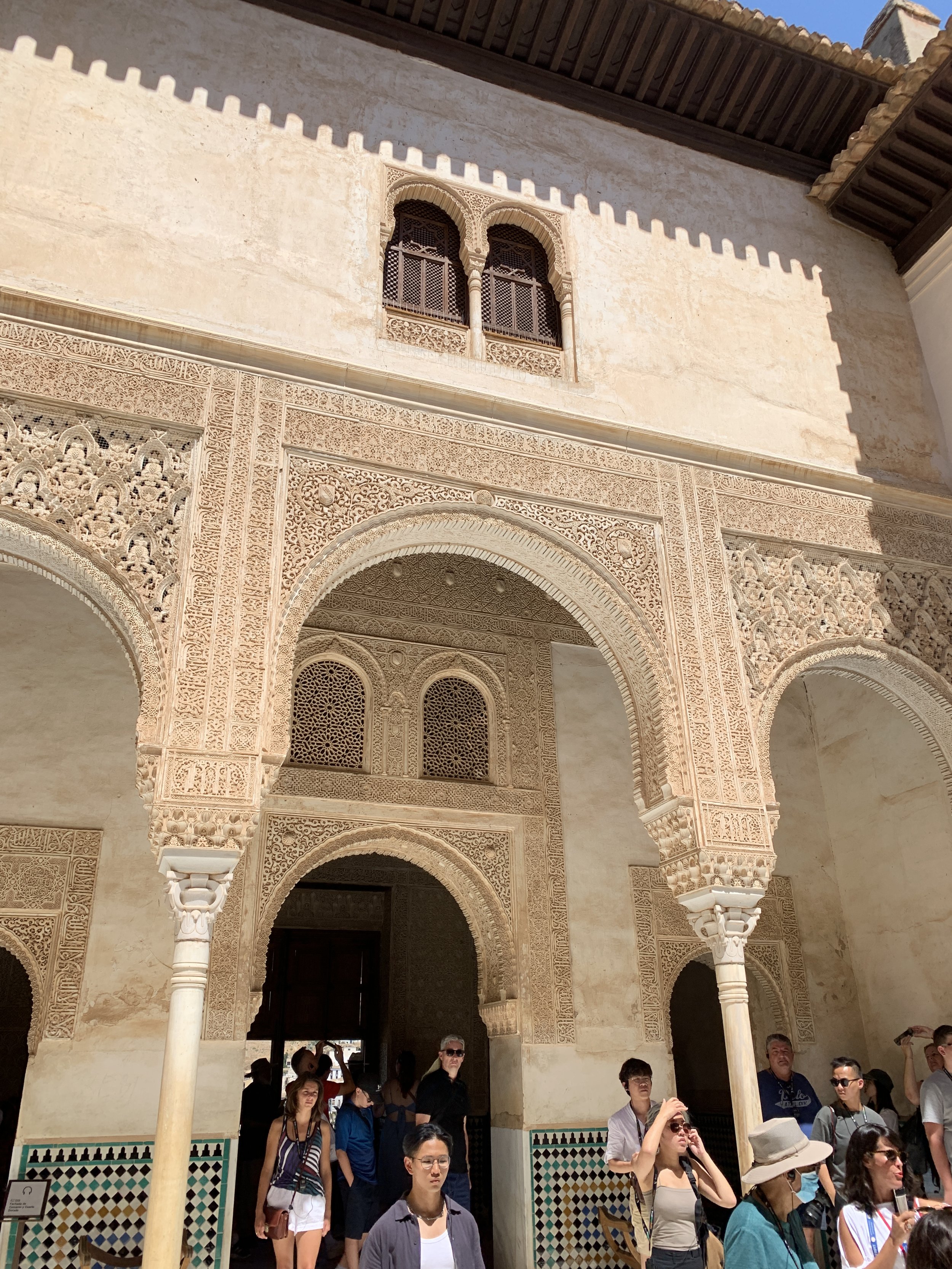
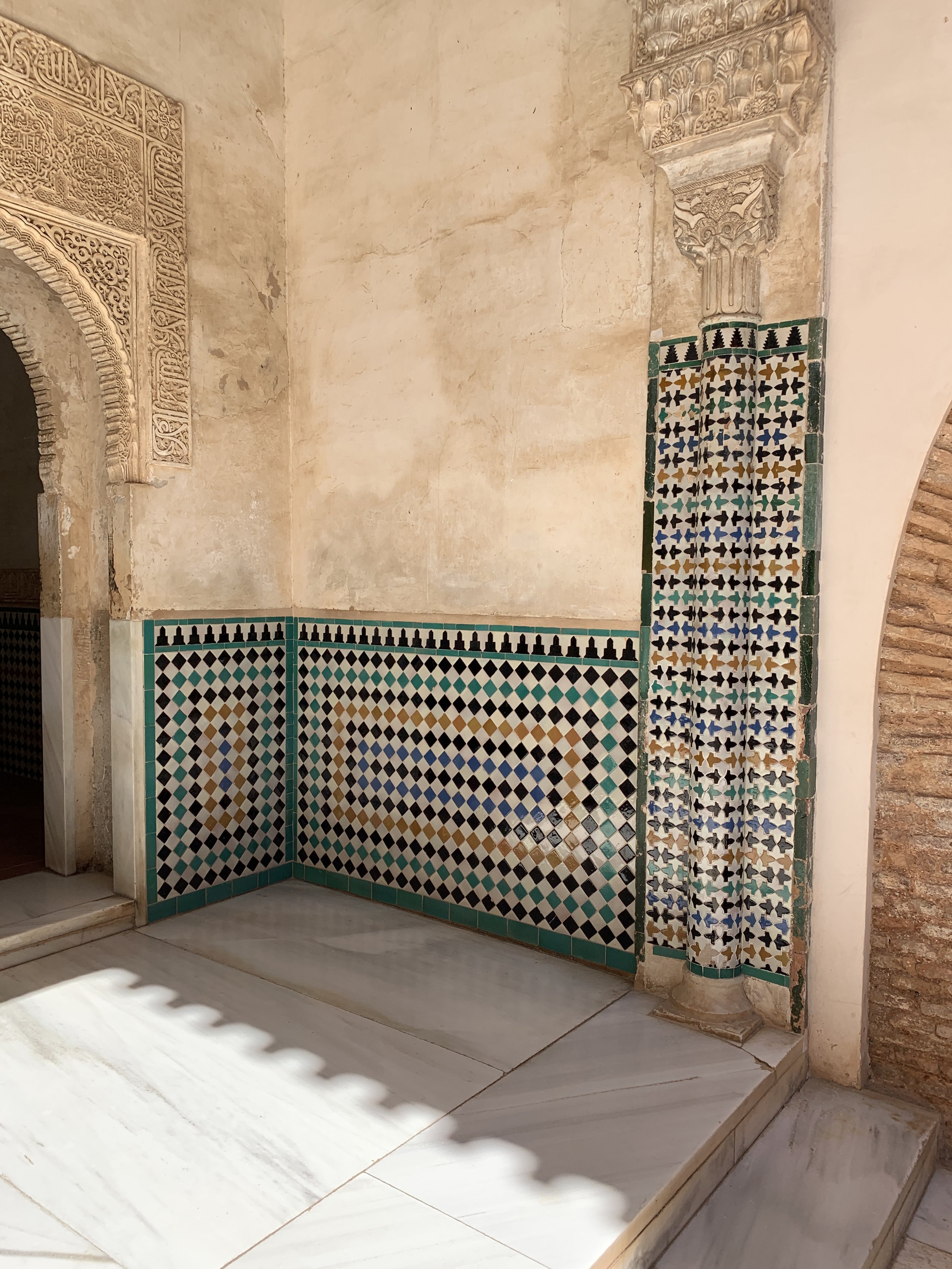
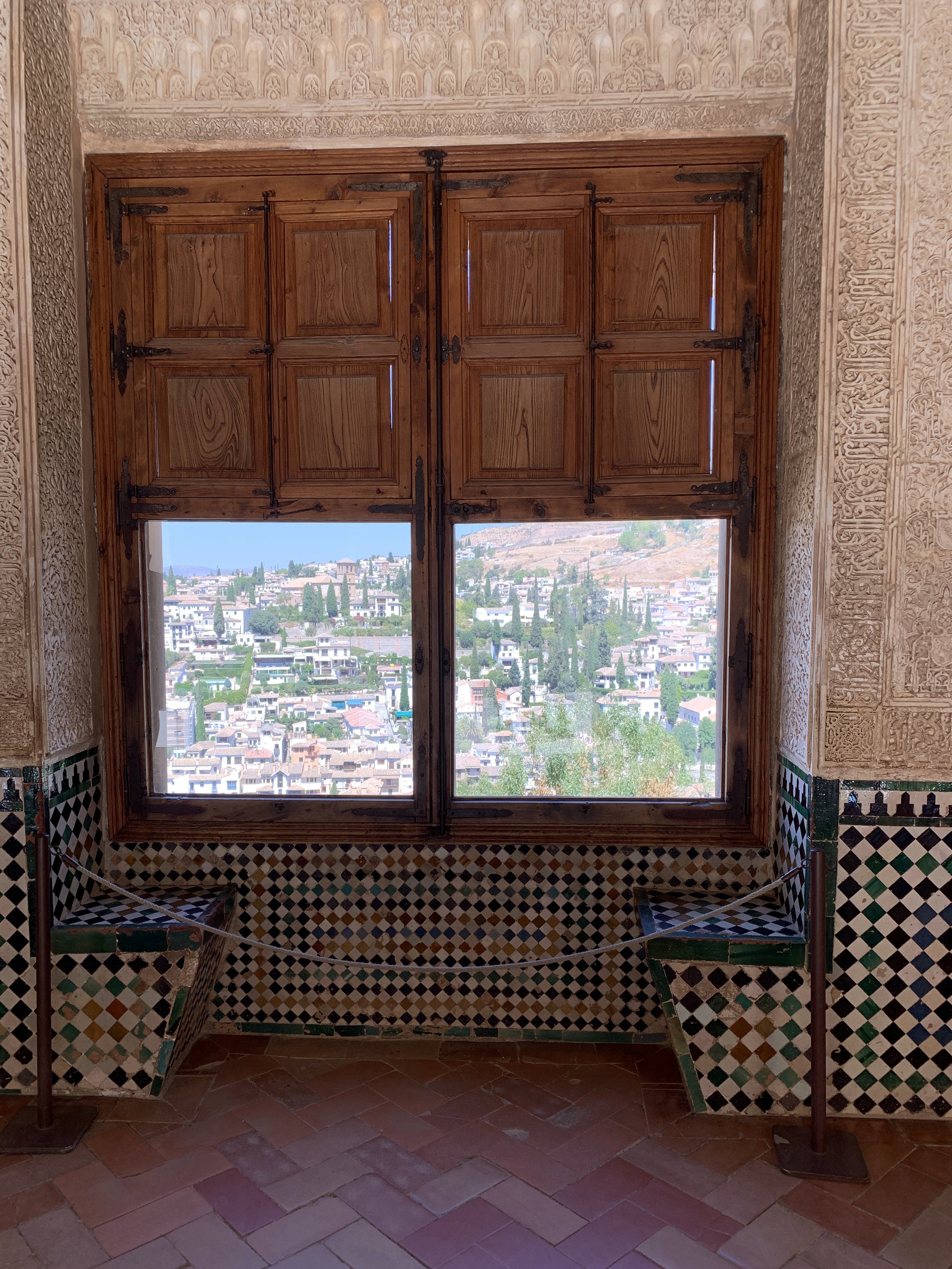

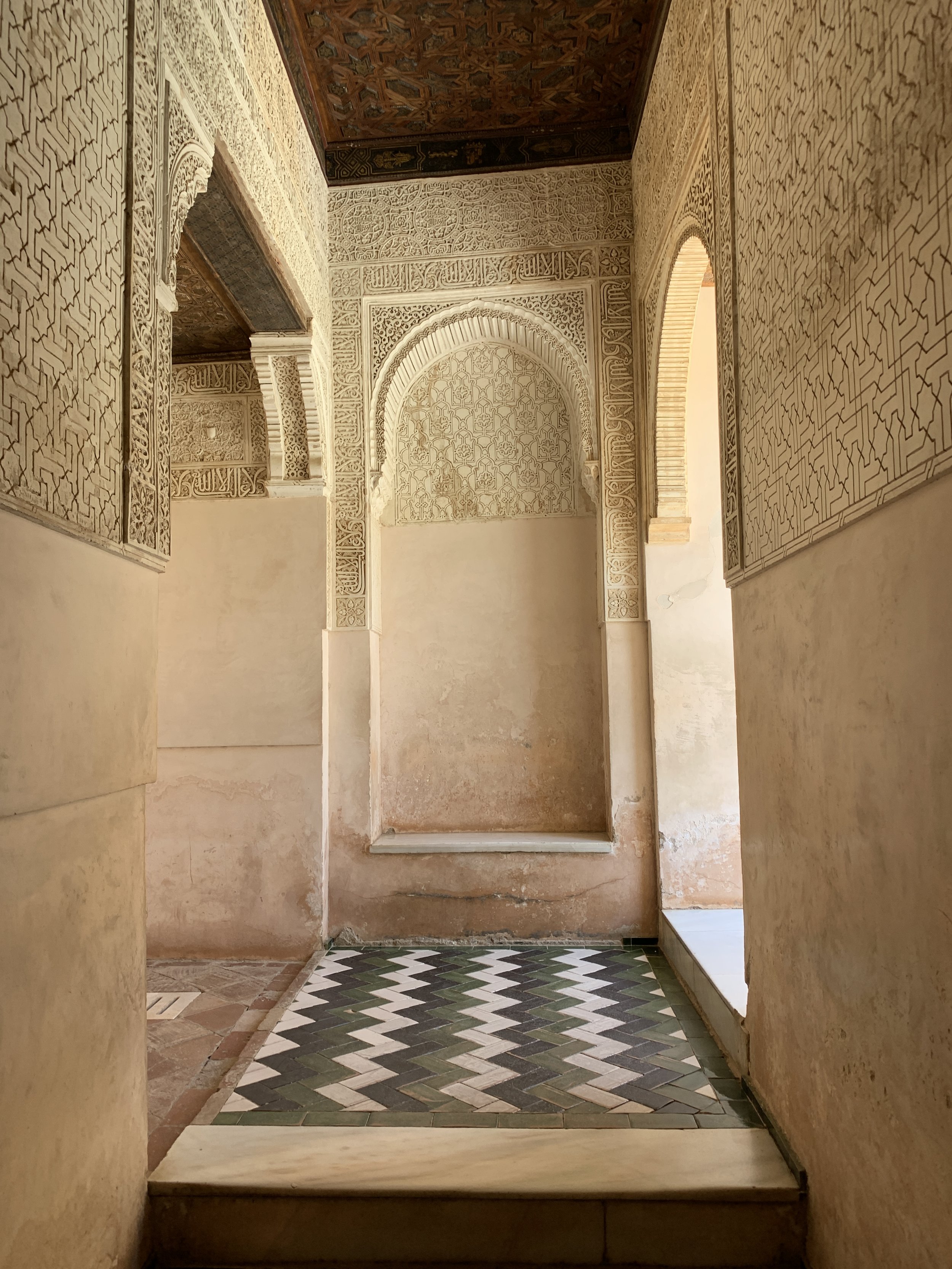

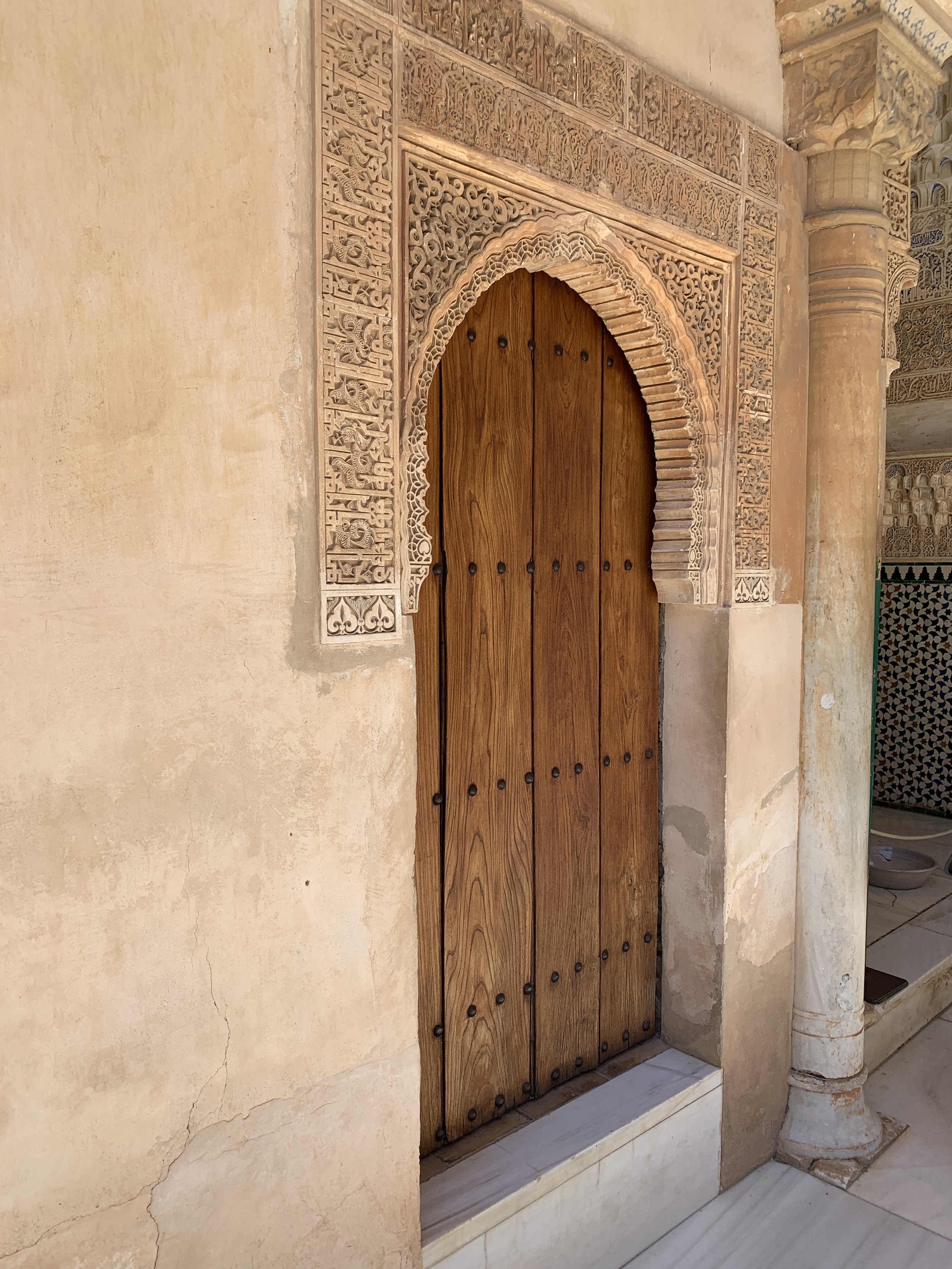
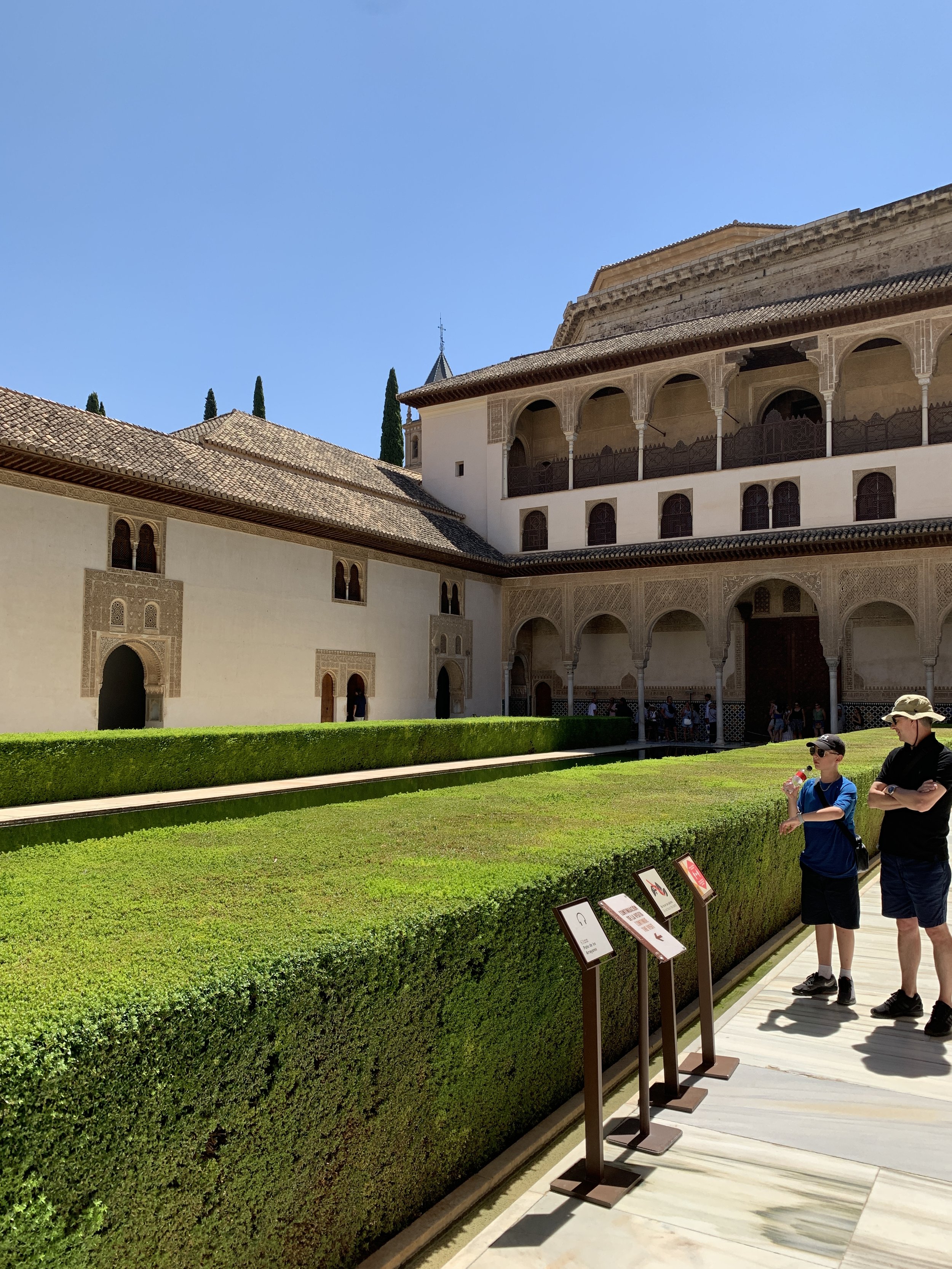
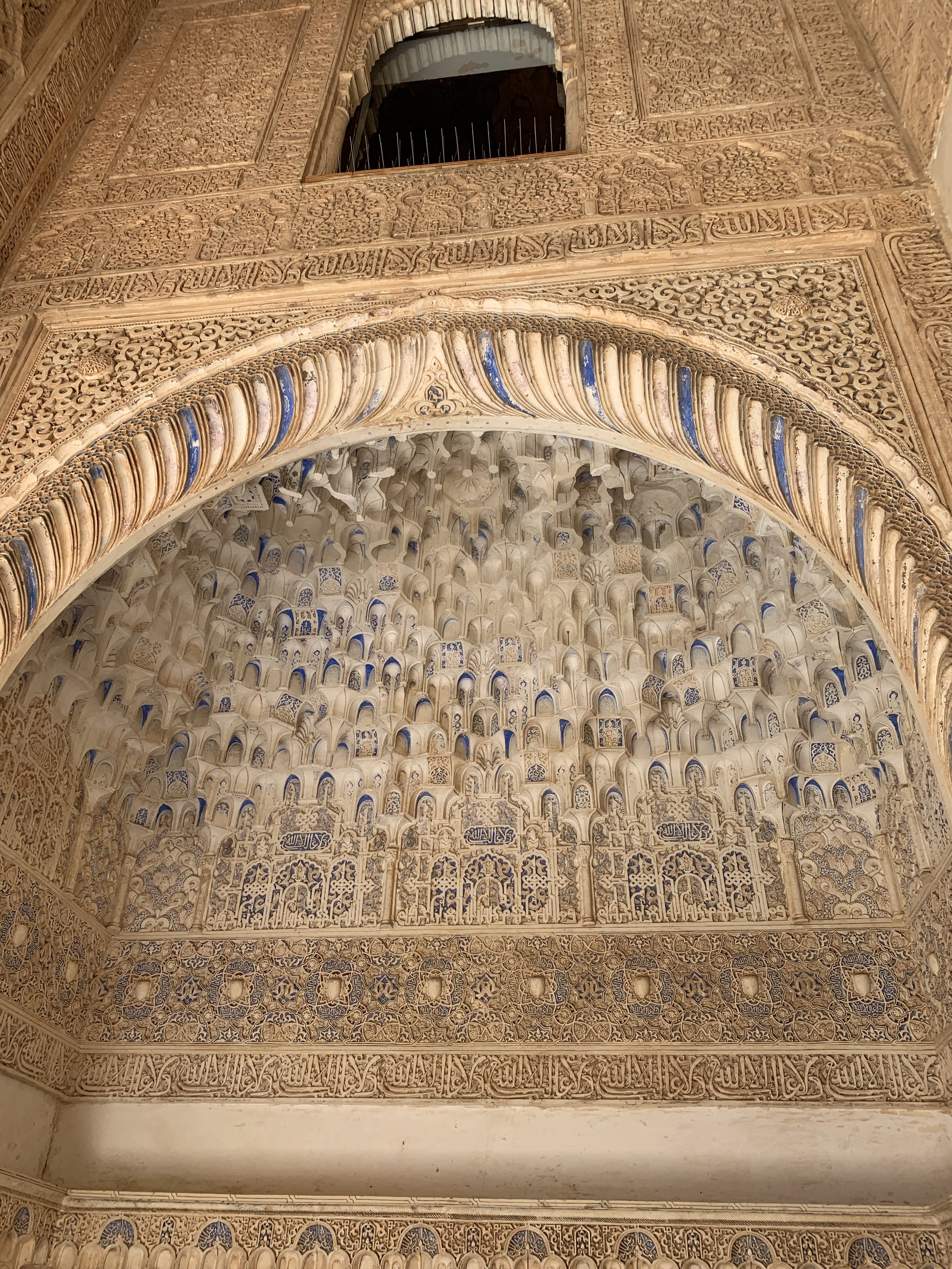

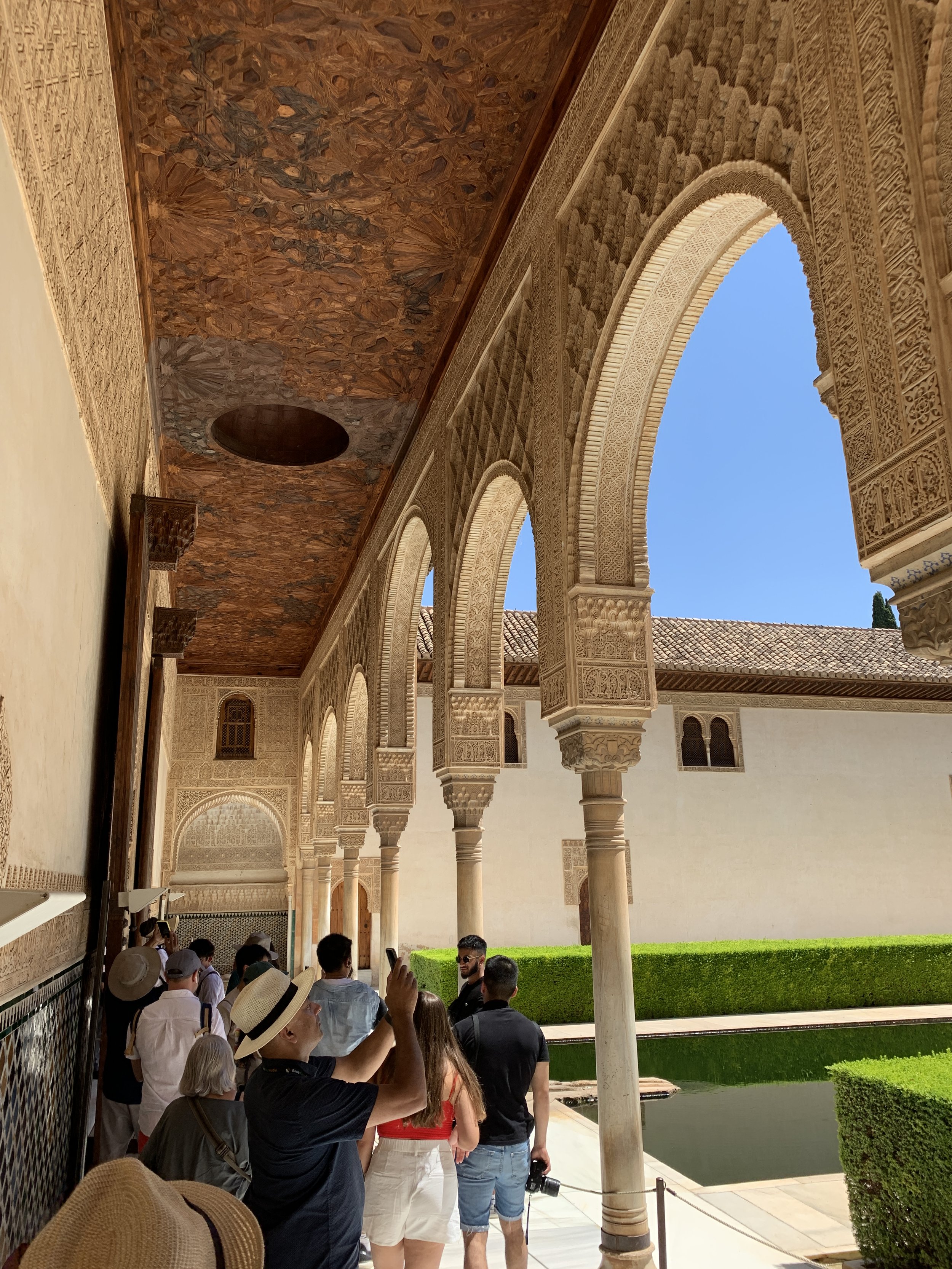
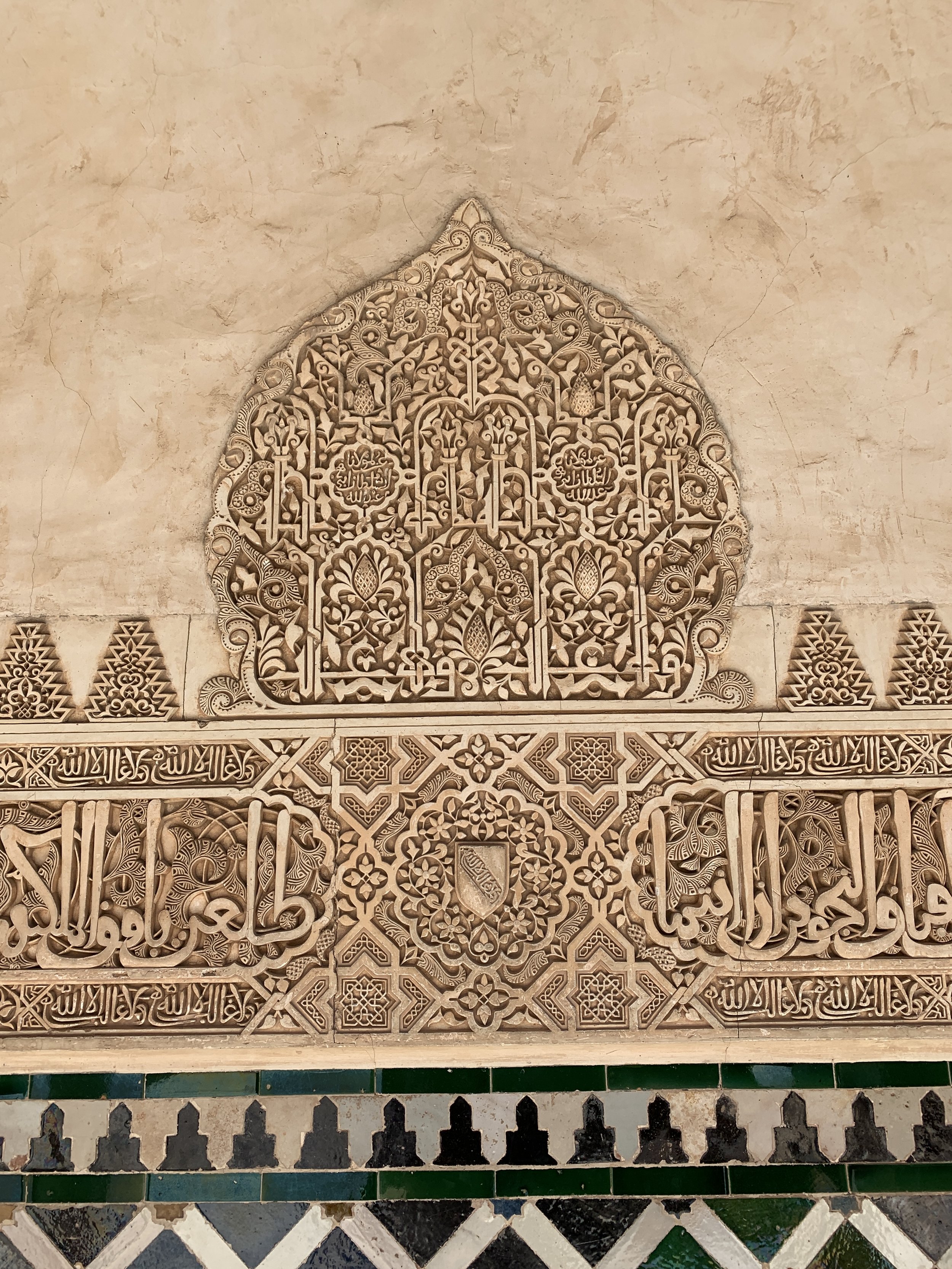

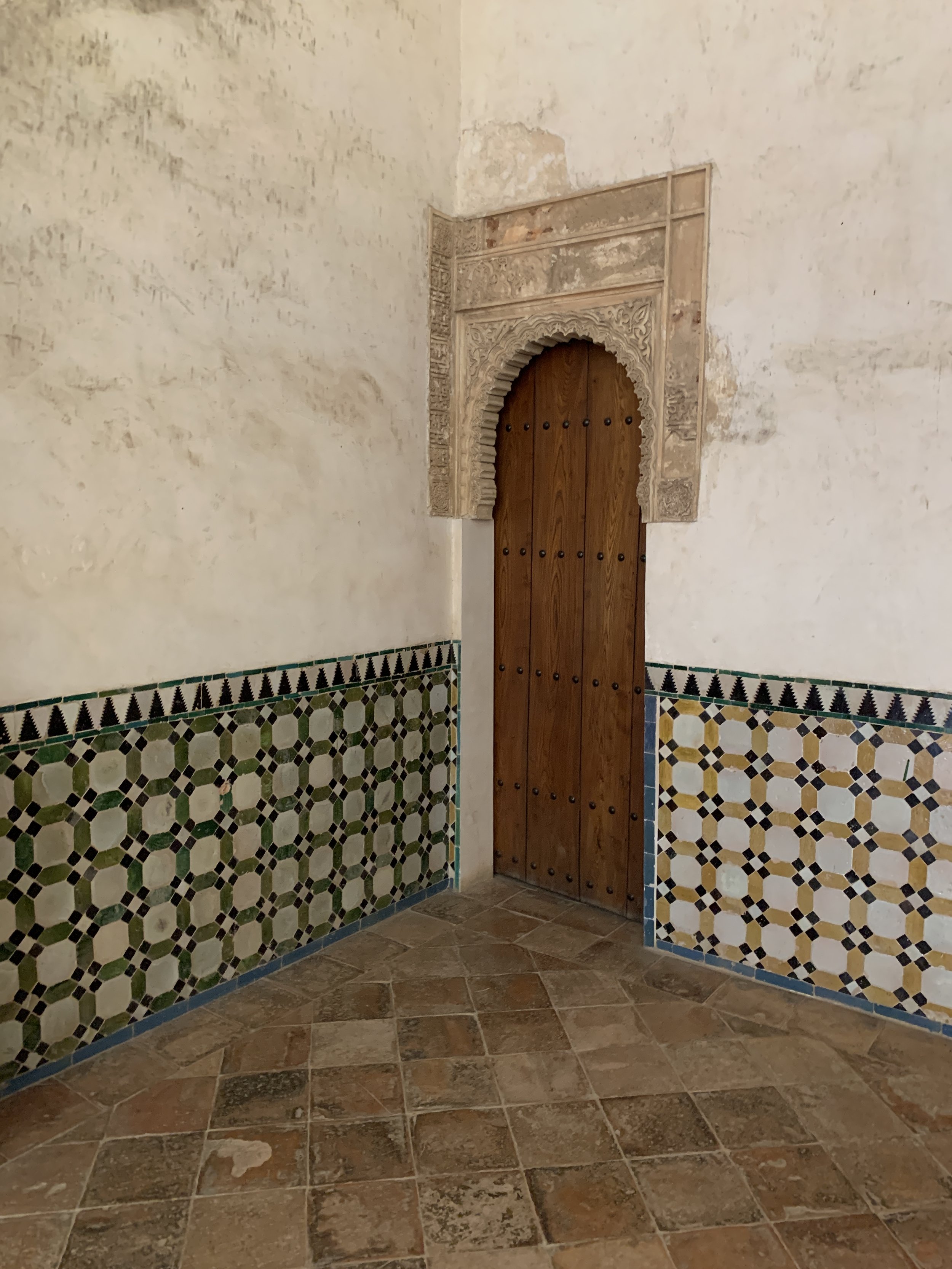


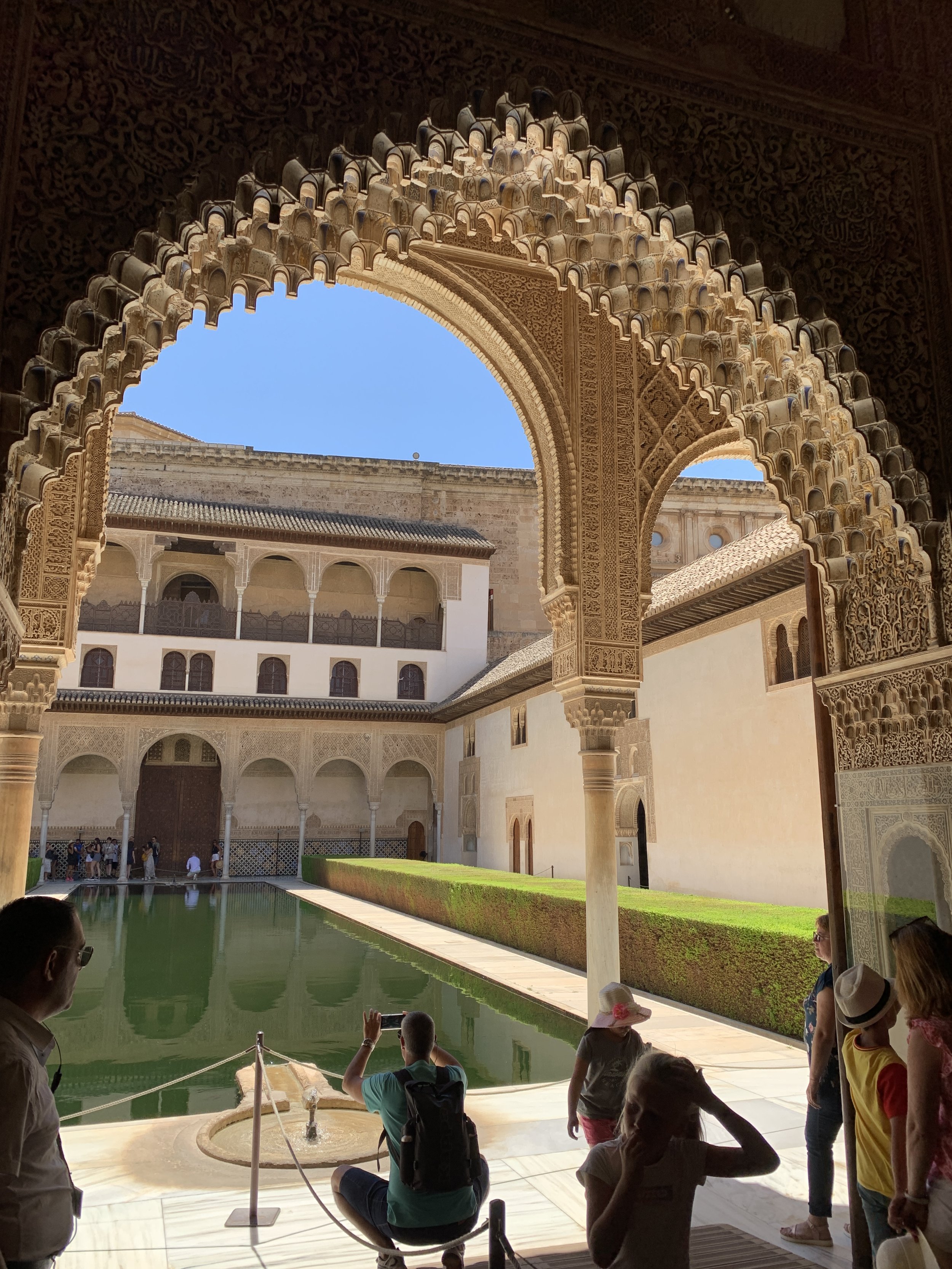

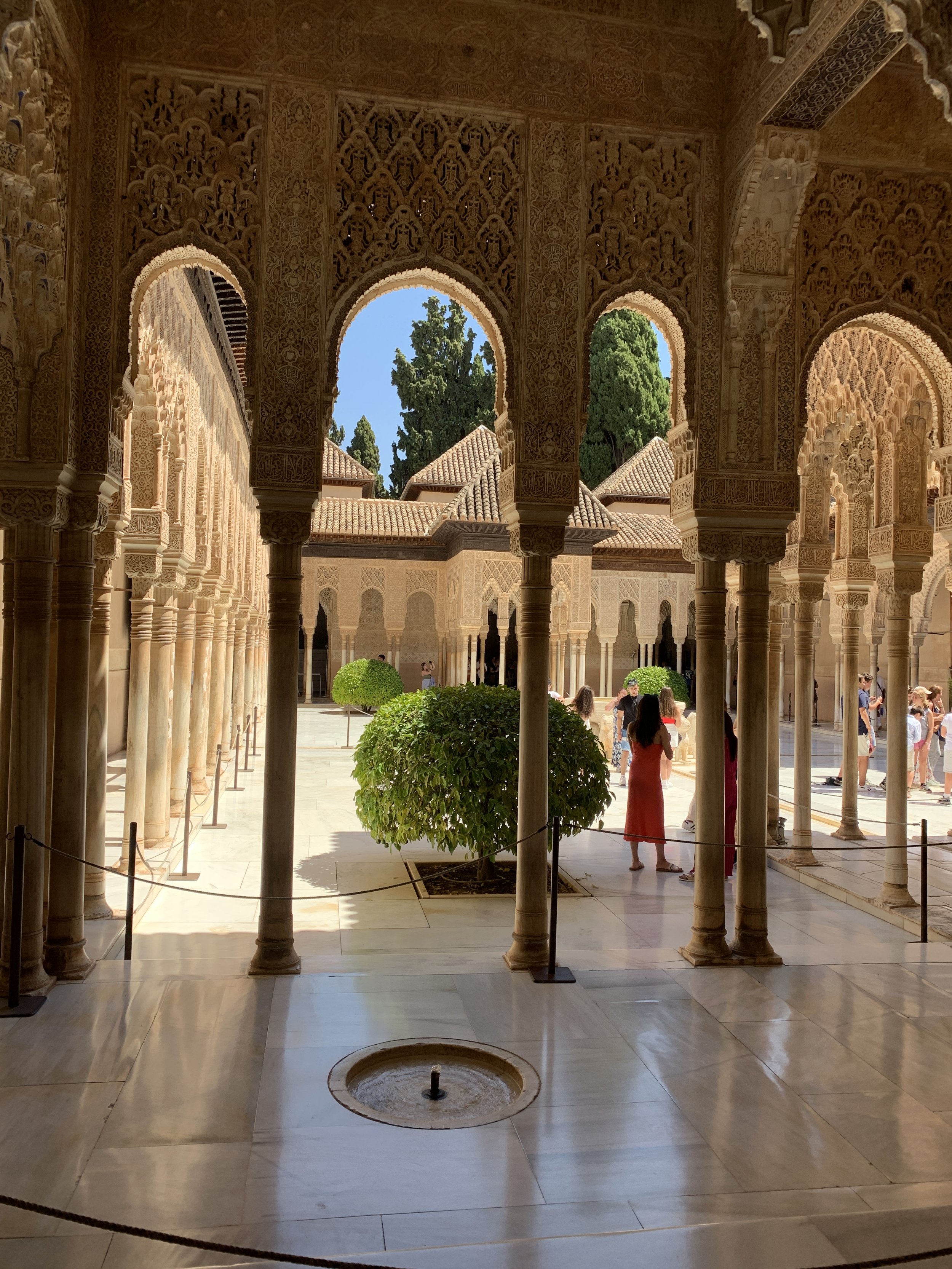
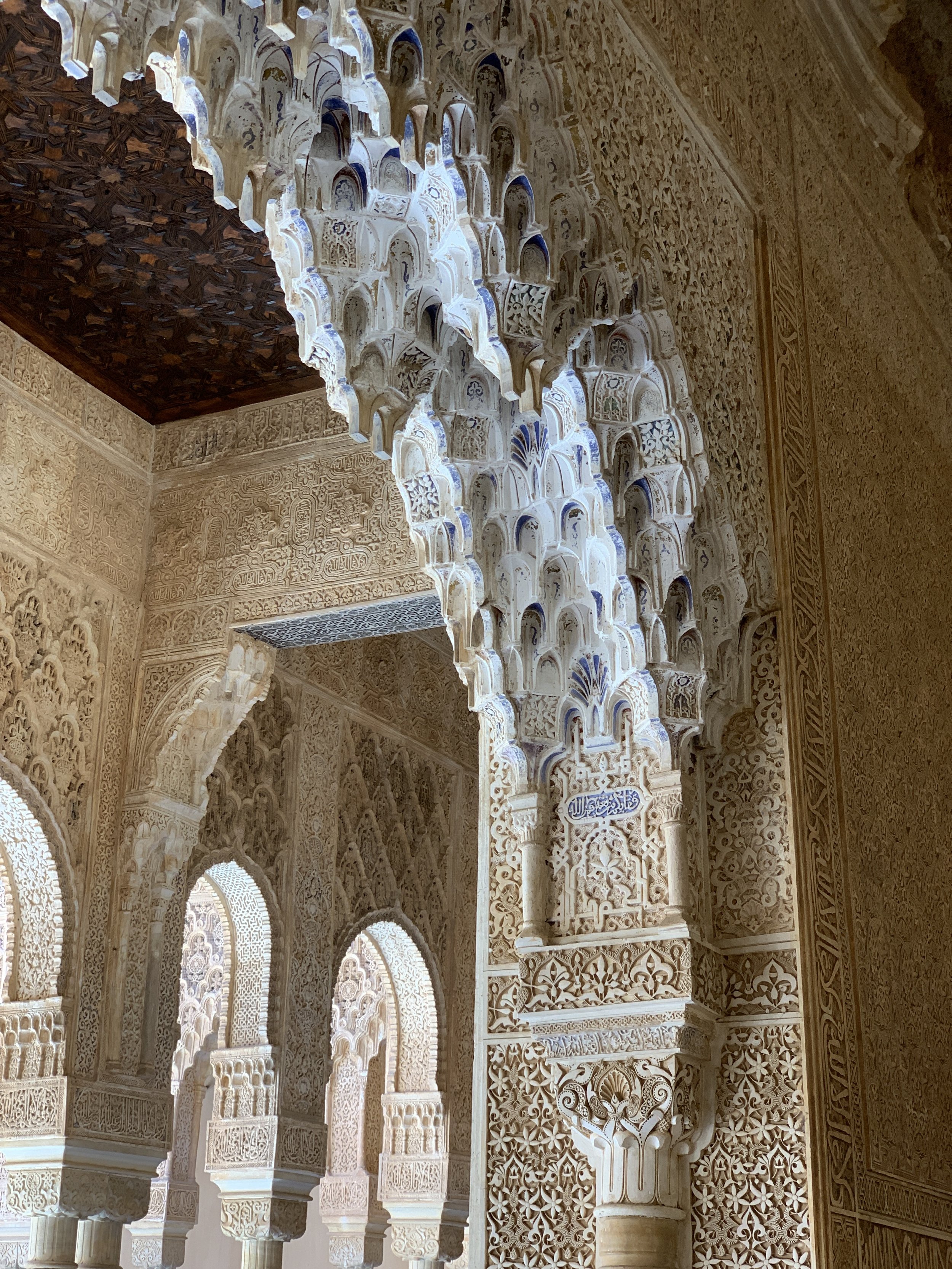
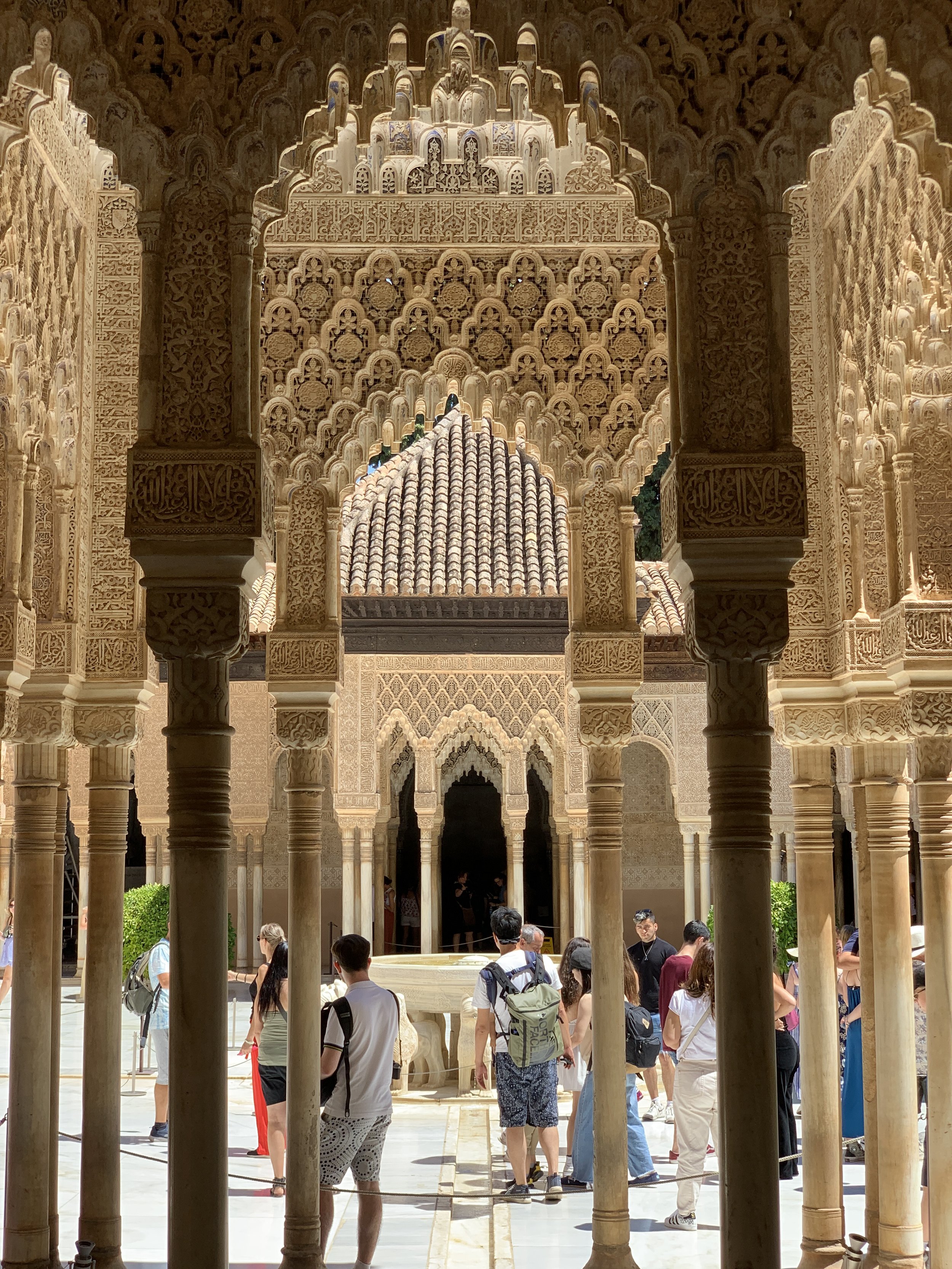
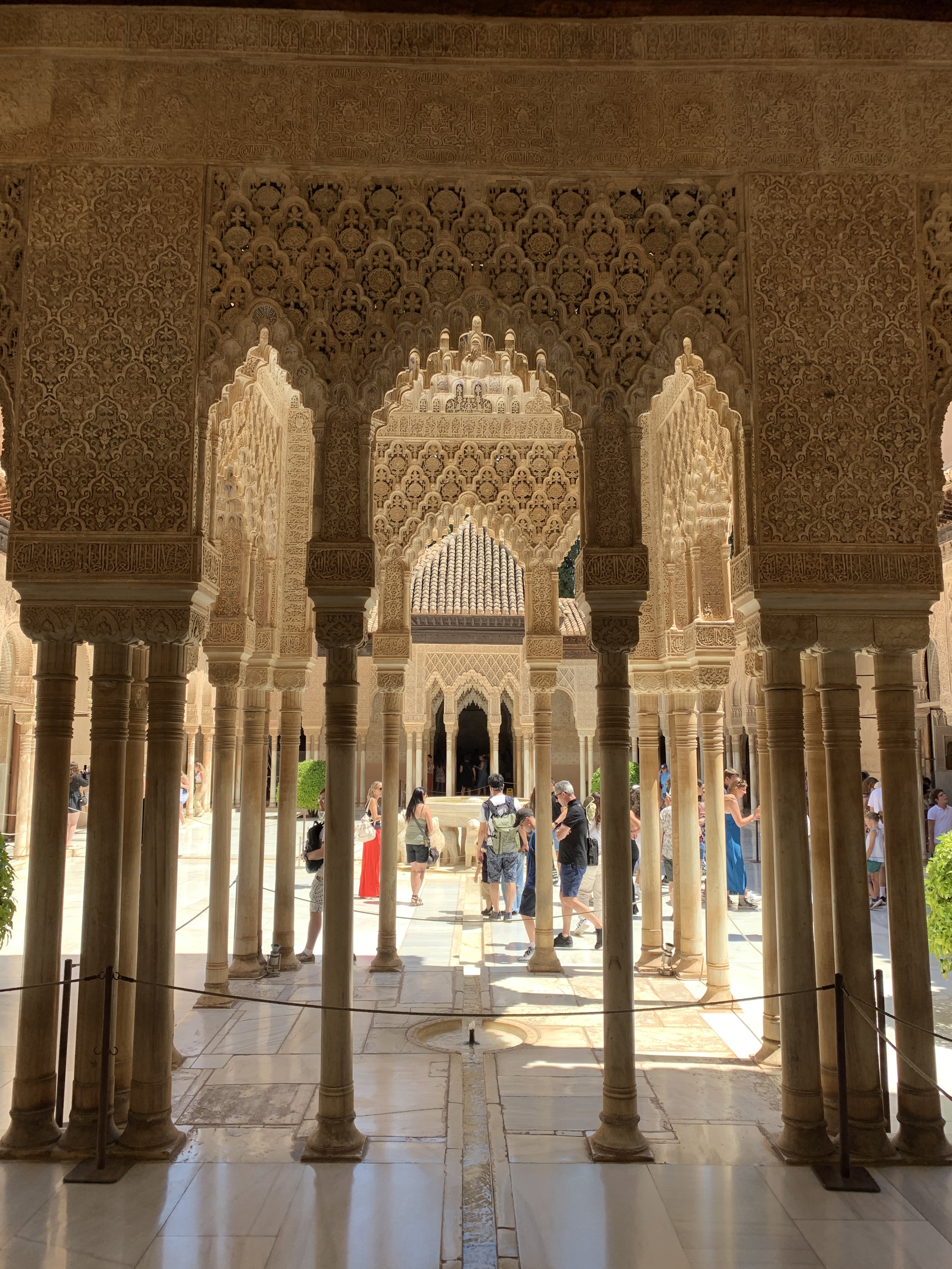
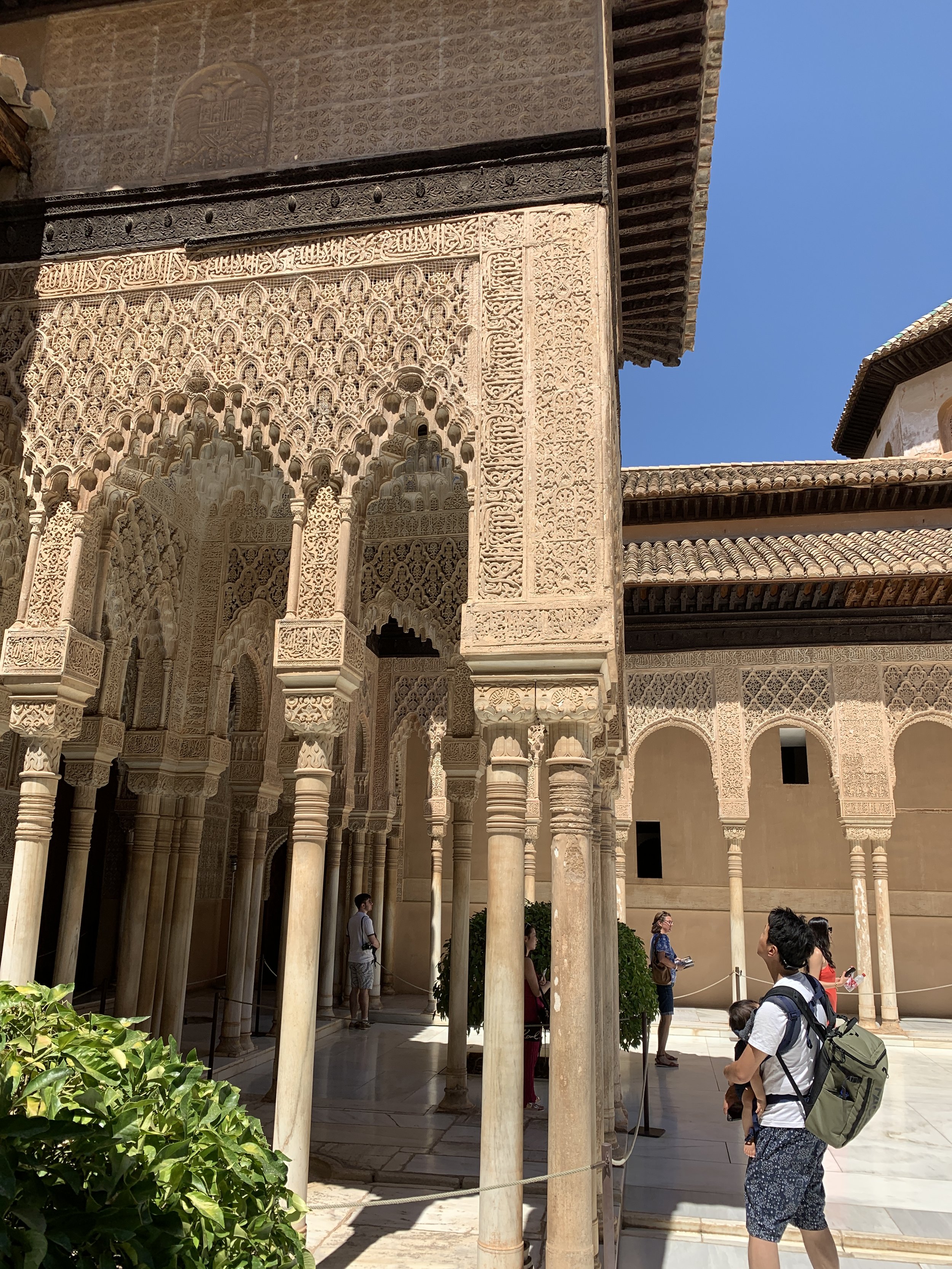
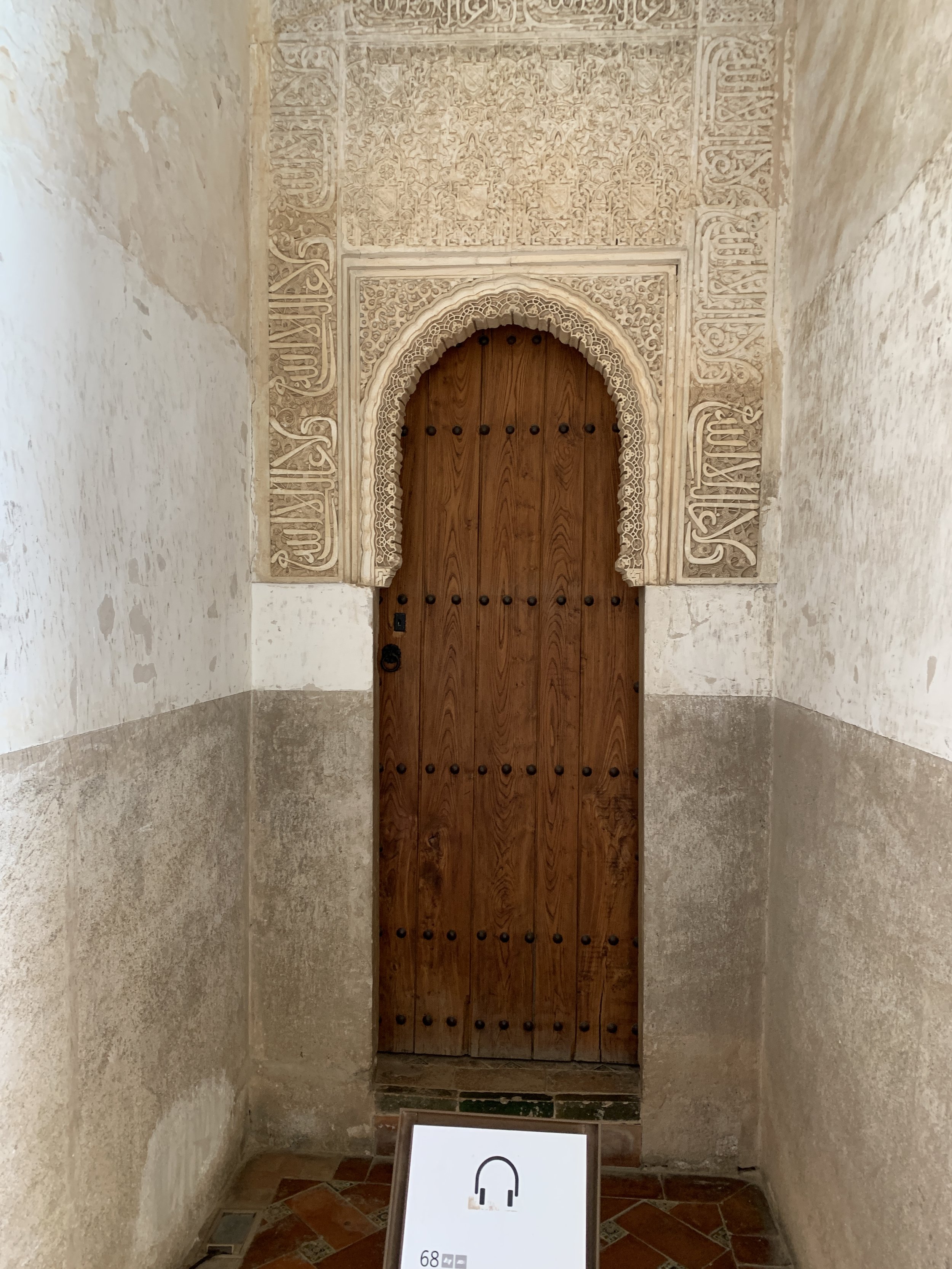
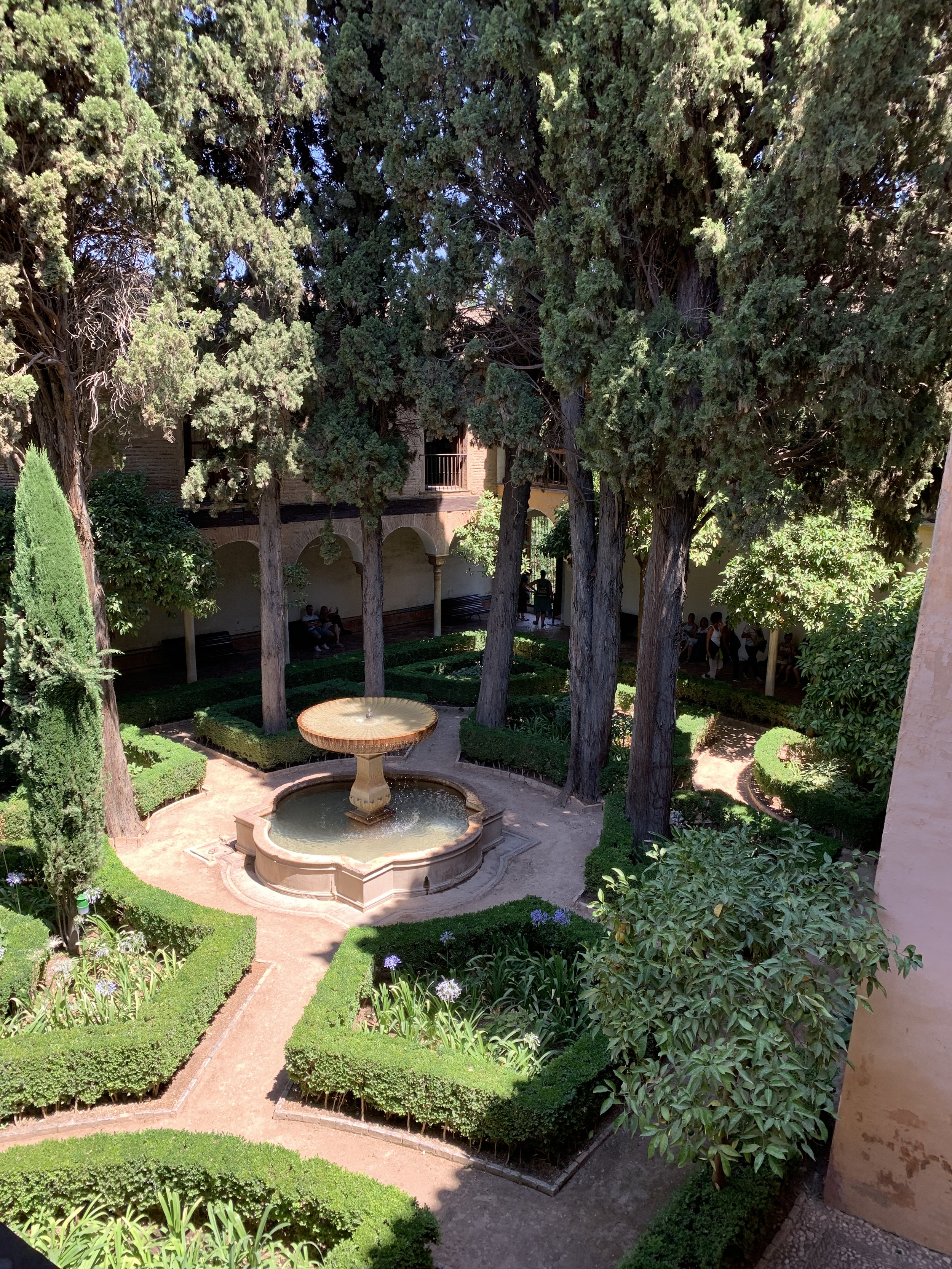

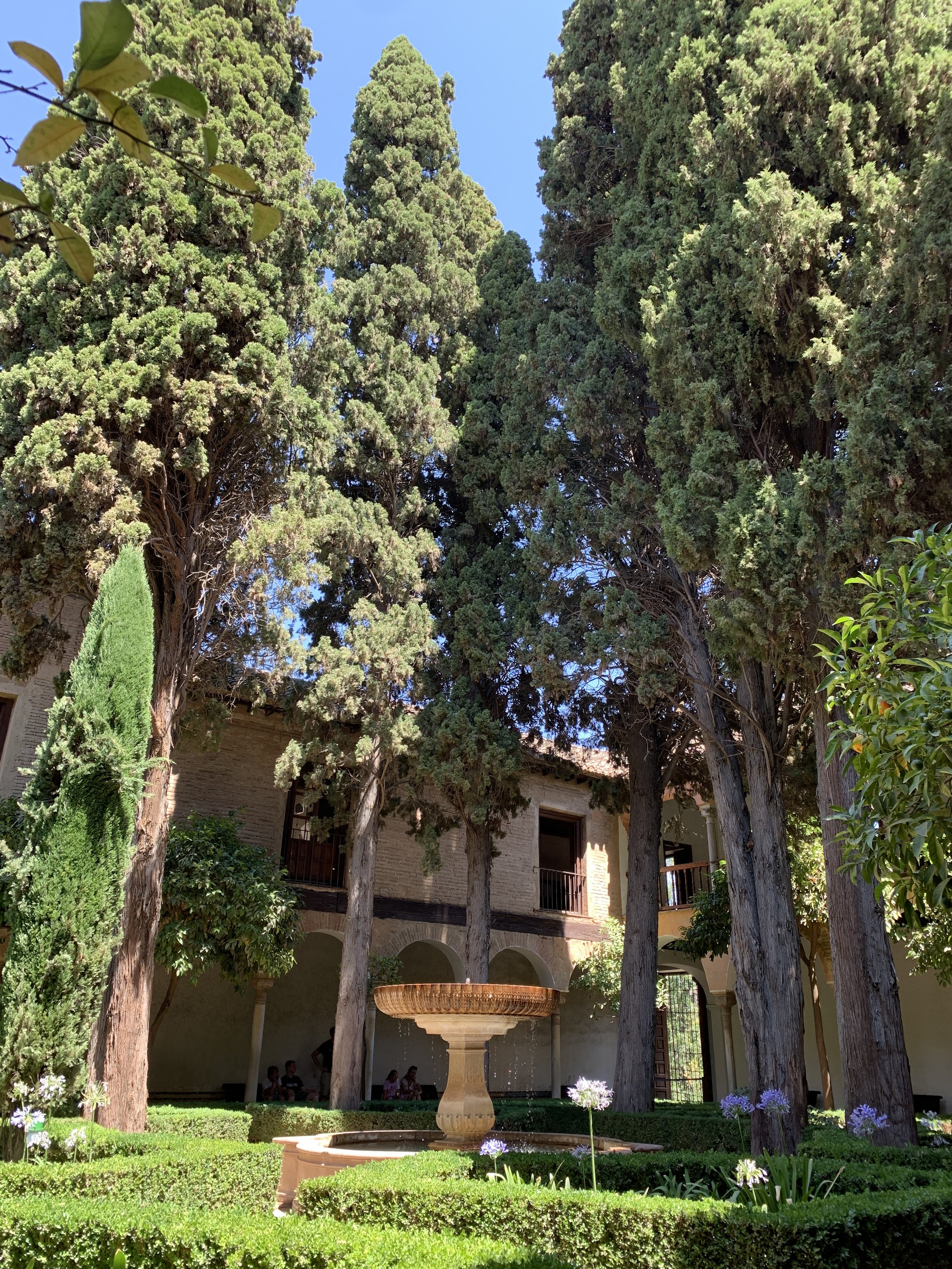
13) Back in the town center, I browsed lazily through the Alcaiceria — again, if it looked like I could buy it at home, why would I buy it there? — and then I remembered vaguely “Oh yes, the Albaicin, the boys in England kept telling me not to miss that.” Well . . . I might have anyway, but regardless, armed with the not-as-reliable-as-advertised Gyygle Maps, I set off on a perpetually uphill climb up narrow cobblestoned residential streets, not really knowing what I was looking for, facing unexpected construction, summer heat, and personal confusion. “Why is it always up?!” I kept asking myself? “Because, you doofus,” I told myself about ten minutes later, huffing and puffing along the cobblestones, “it’s a scenic overlook!” It can only be up!”
It took me forever to get here and witness this view.
13a) Not for the first time since the journey began, I cursed my lack of advance research. I think I probably missed a mosque or something, but I have only myself to blame.
My drinks-eye view of the Alhambra later, after my hike up to the Albaicin.
13b) But when I limped to the top, I did have to admit the view was quite something! After a moment of Dutiful Appreciation I limped back down again, retraced my steps, and ended up at a restaurant facing the Alhambra across the way. They hadn’t opened for dinner yet, and I somehow couldn’t make the nice young man understand I didn’t care, just feed me. Instead, he brought me a tinto e verrano and a tiny dish of olives, and I just sat back, enjoyed the shady quiet, and let my dogs bark under the table.
The final courtyard garden of the Nasrid Palace.
14) Later, I returned to the restaurant I’d dined at the day before, because I simply had no imagination left. Besides, my train was leaving very early the next morning for Barcelona, and let’s face it — I’d already lived a week of enchantment visiting the Alhambra. What a day!
Exhausted, but happy and grateful in the gardens of the Nasrid Palace.


















